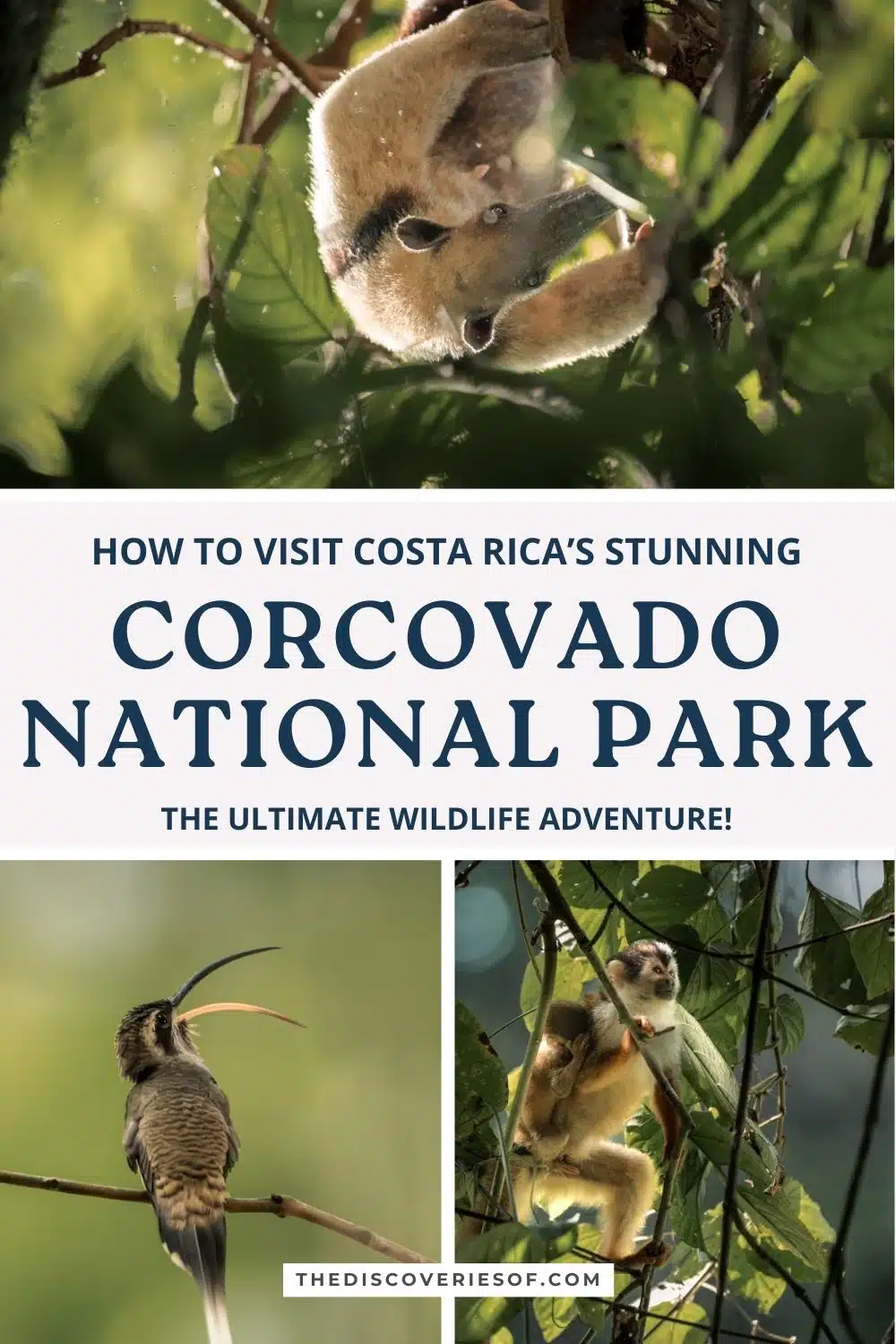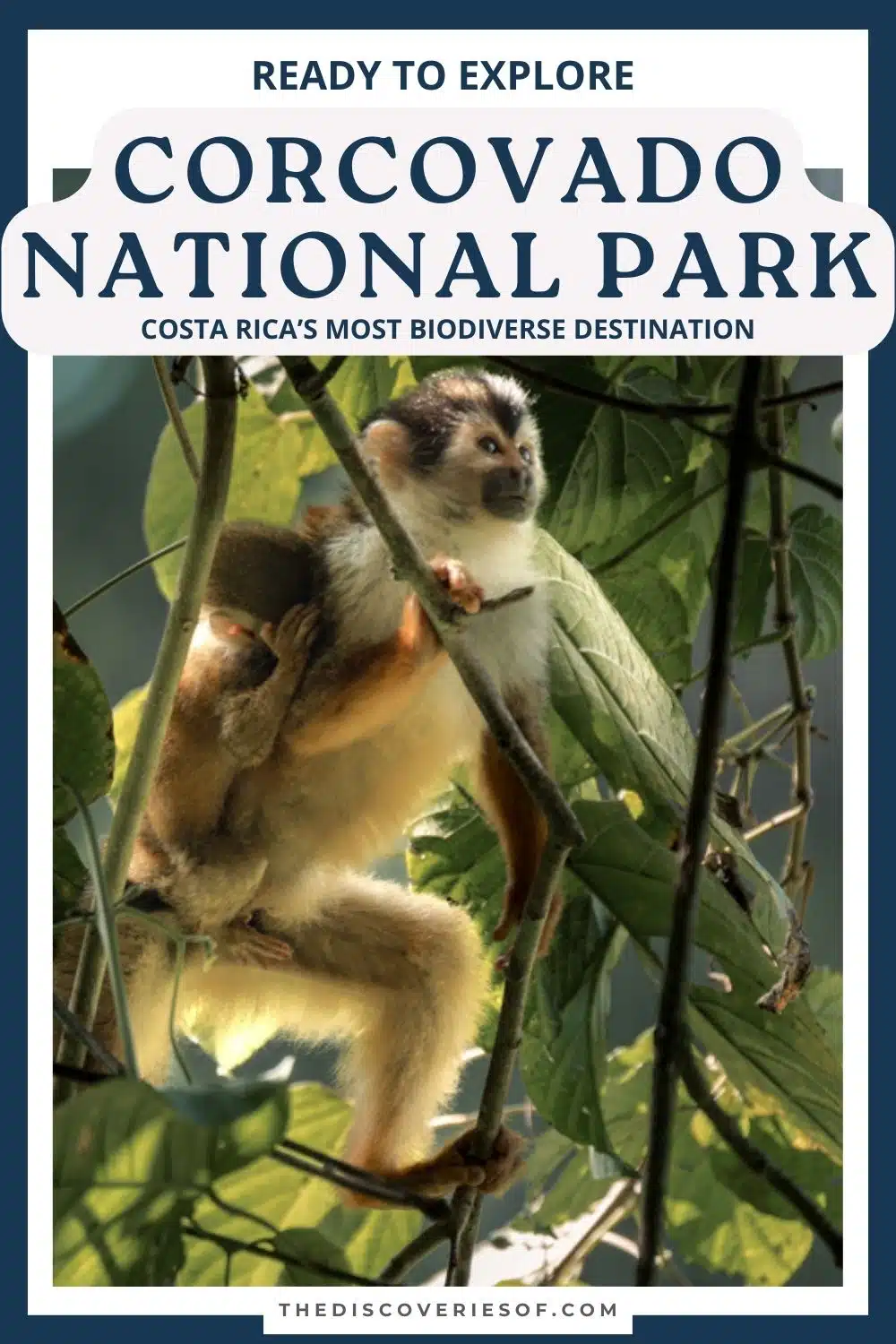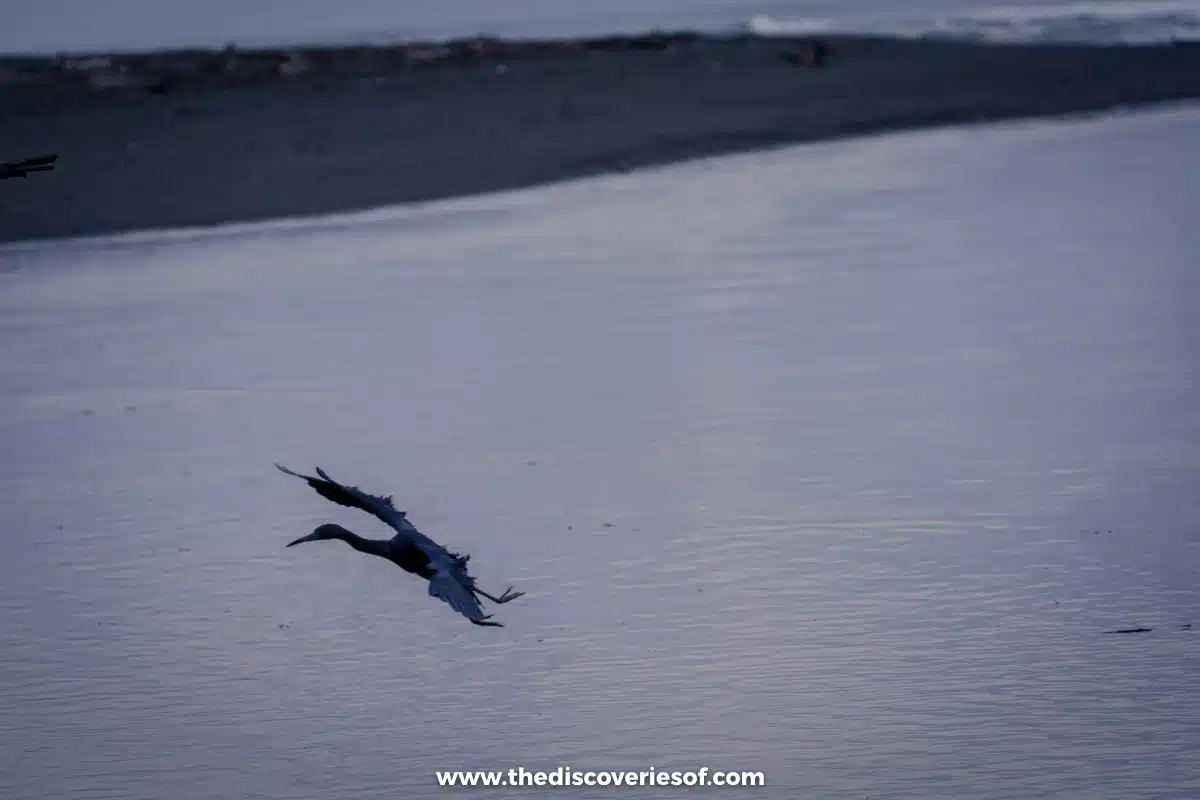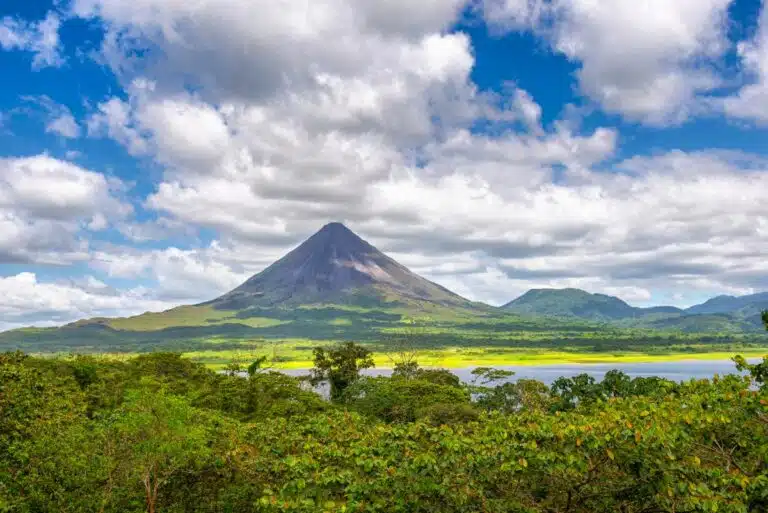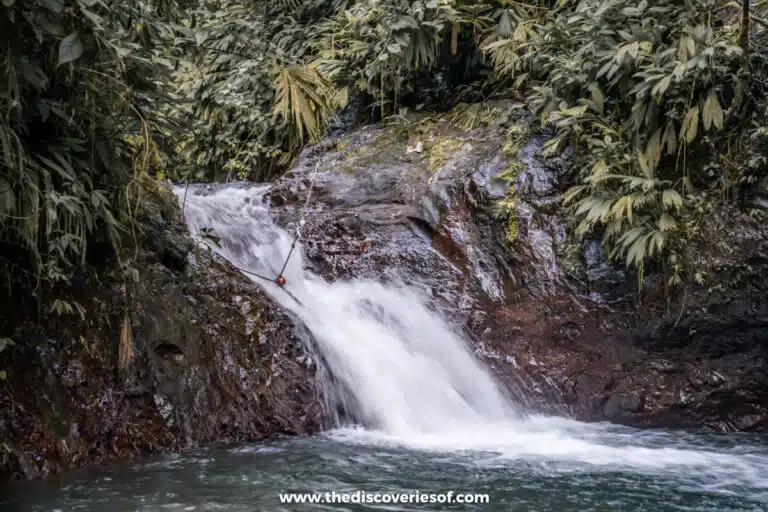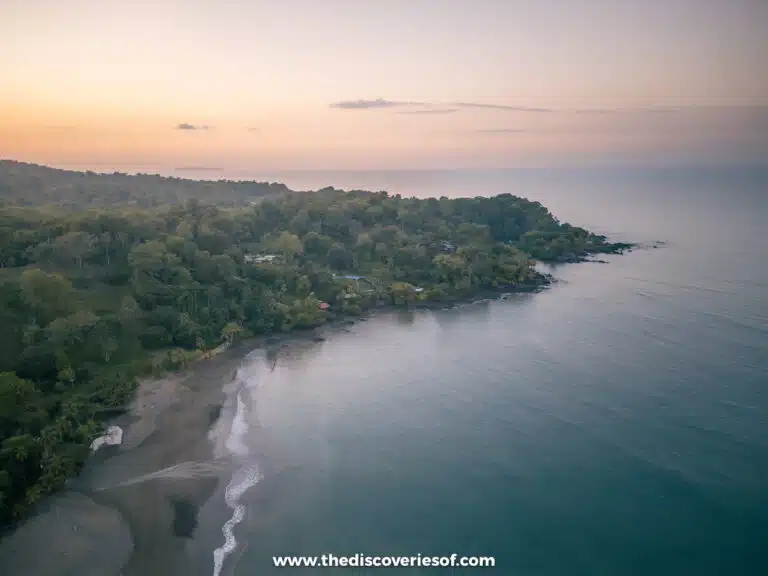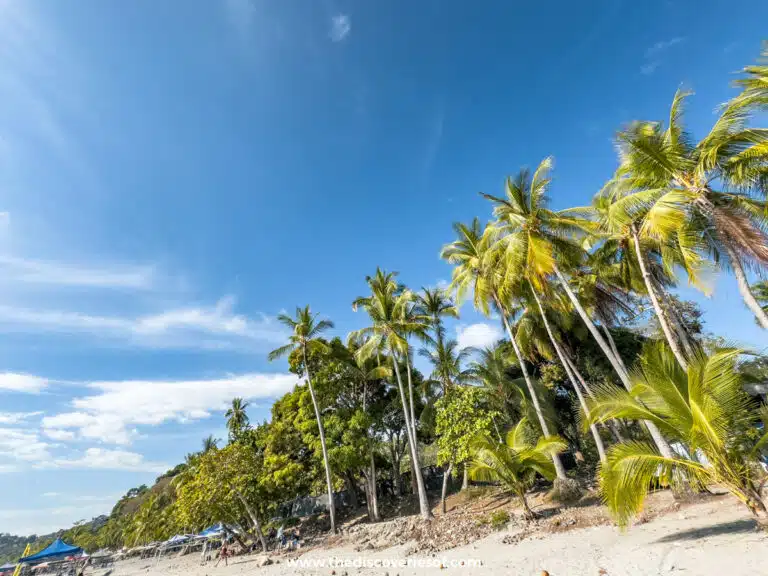Plan a trip to Corcovado National Park with this in-depth guide to one of Costa Rica’s most incredible destinations.
The dramatic sounds of howler monkeys, the bright display of colours on perched toucans, and fairytale vines climbing up ficus trees all likely greet you in the first few minutes after you arrive.
Welcome to Corcovado National Park.
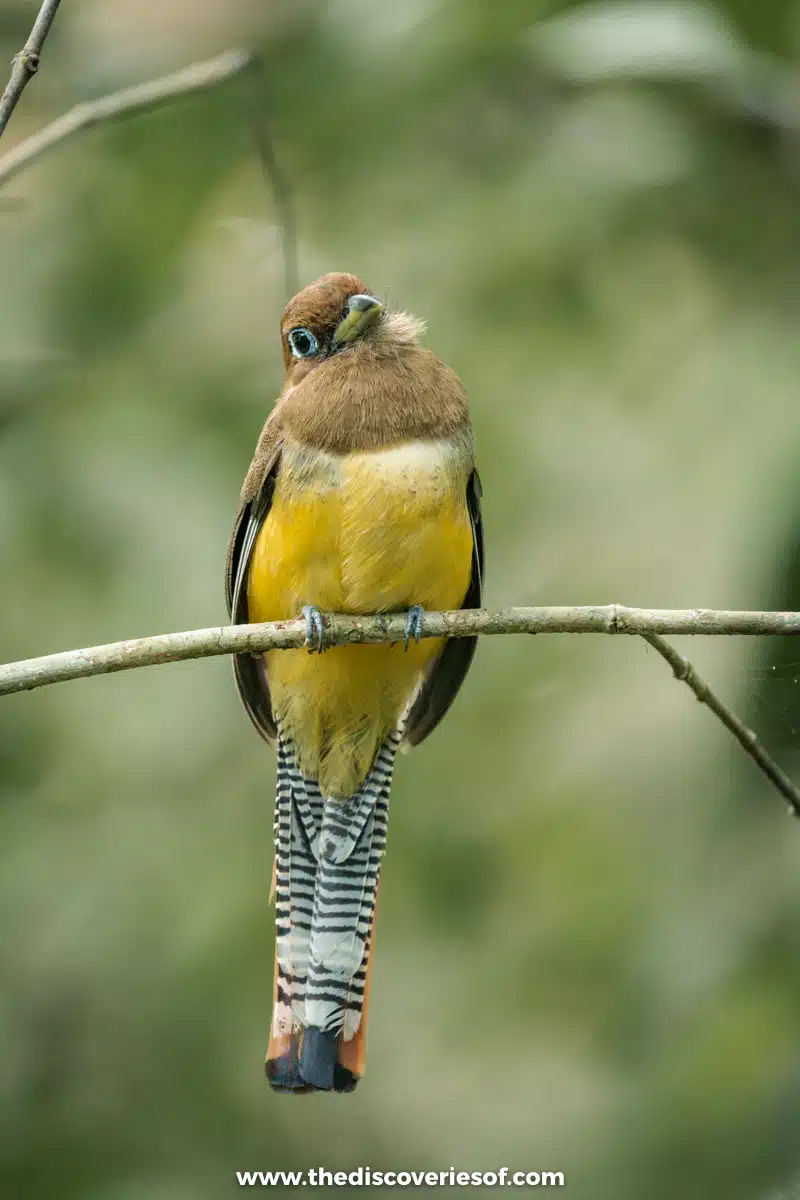
This ancient rainforest in Costa Rica has been home to animals, insects, and plants for thousands of years. Indigenous people lived here long ago, and the rich abundance of the ocean, jungle, and natural beauty plays no small part in Costa Rica’s well-loved phrase “Pura Vida.”
I was recently in the 163.7 square mile stretch along the enchanting Osa Peninsula, and can’t begin to describe how truly incredible the scenery was. Prime example? In my first 10 minutes, I photographed a Baird’s Tapir, an animal that some people wait a lifetime to see.
With 2.5% of the entire world’s biodiversity along the stunning rainforests, rivers, and Pacific Ocean, you will find incredible wildlife without even trying.
That said, to see the most elusive creatures (and avoid the most deadly), you definitely want to travel with an expert. You also want to know every detail, from which ranger station to start at to what hikes to choose. That’s where this guide will help you out.
I’ll also drill down every practical aspect of planning at the end of the article. So be sure to check out my tips on getting to Corcovado, what to pack, and everything you need to plan out before visiting.
Ready for an adventure of a lifetime? Here we go.
PS: Dive right in with my Corcovado YouTube video
Why Visit Corcovado National Park?
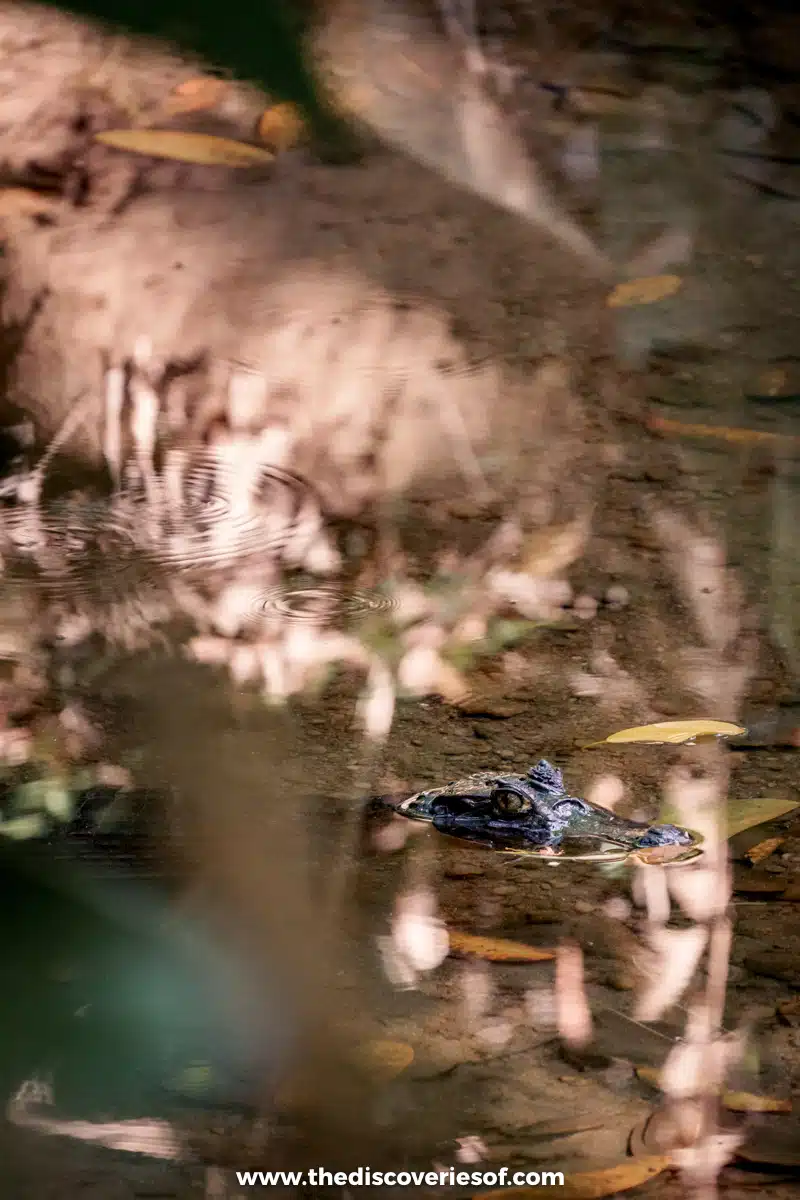
Looking at a Corcovado National Park, Costa Rica map, you’ll immediately notice that the sprawling rainforest covers over one-third of the Osa Peninsula. Zoom in a bit, and you’ll see rivers, the ocean, mountains, and (of course) rainforests galore.
I’m not going to sugarcoat it; visiting Corcovado isn’t exactly comfortable. Your feet get wet, you may sweat more than you knew possible, and creepy crawlies are basically around every lush green corner you turn. Oh, yeah… and you’ll pick ticks off your clothing and likely end up with more than a few bug bites.
Plus, hotels don’t really exist besides some functional dorms and a few rather costly (but probably worth a splurge) eco-tourism spots, like Pacuare Lodge.
Don’t let me scare you off, though. Seriously.
Taking a trip to Corcovado means you’re experiencing the most biodiverse place on the globe. This isn’t hyperbolic. Literally, 2.5 percent of the planet’s species live here.
Go on? Gladly. You’ll see endless wildlife on land and in the sea, so bring your camera and a killer lens.
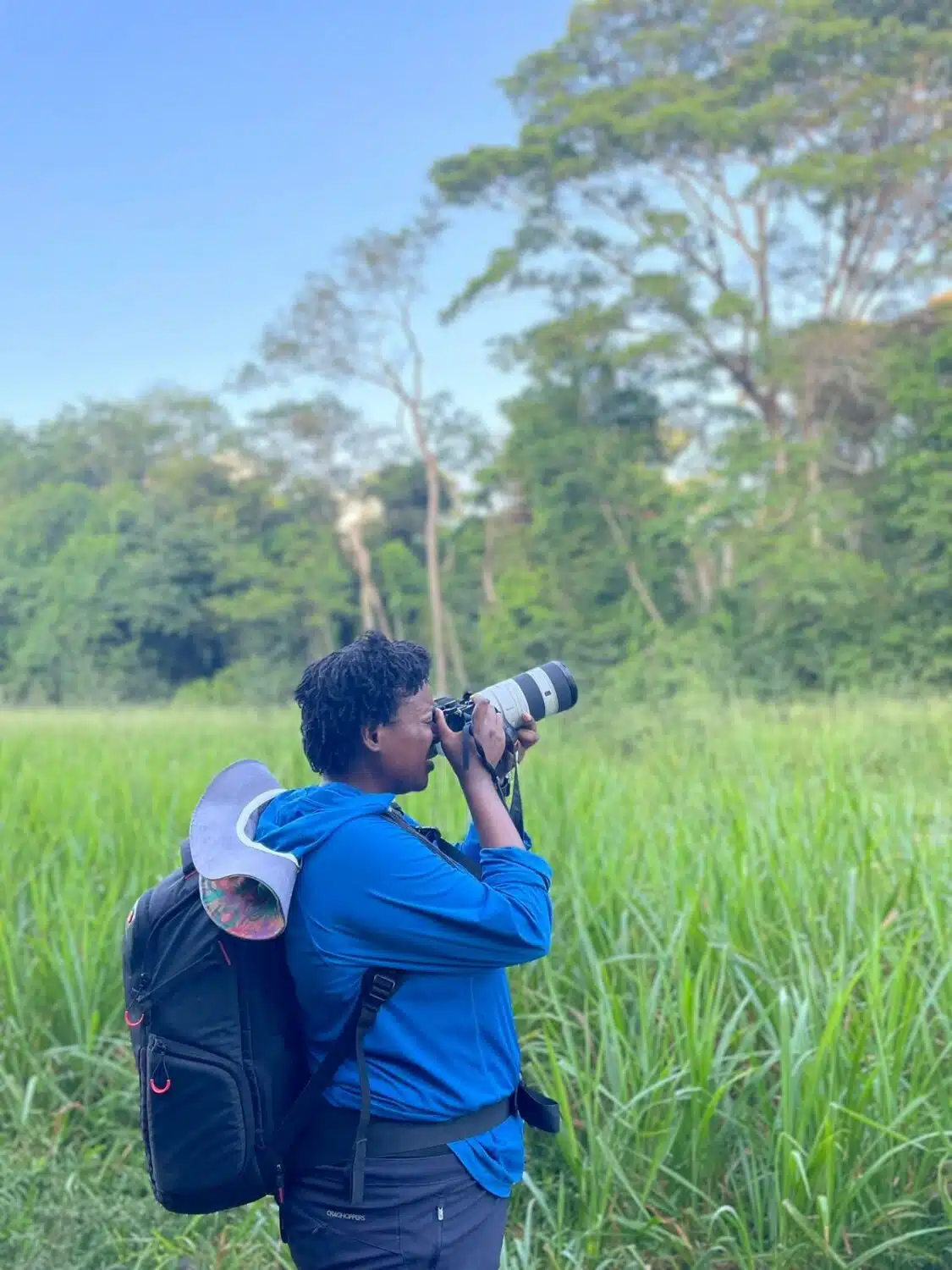
You don’t even have to stray far from the most popular ranger station (Sirena) to see loads of wildlife. But adventurers can get their thrills, too. Remote waterfalls, epic hikes, and chance encounters with venomous snakes hide around each mysterious jungle trail.
Wildlife To Look Out For in The Park
With thousands of species of plants and animals calling the rivers, oceans, and rainforests home – there’s a lot to keep an eye out for in Corcovado National Park.
Definitely bring a camera with a good lens and binoculars. Pay attention to your guide as they locate animals high in the trees or on the forest floors.
Hummingbirds, anteaters, and white-faced capuchins were only a few of the dozens (probably hundreds) of animals I saw. Here’s a look at some the top ones to look out for.
Baird’s Tapir
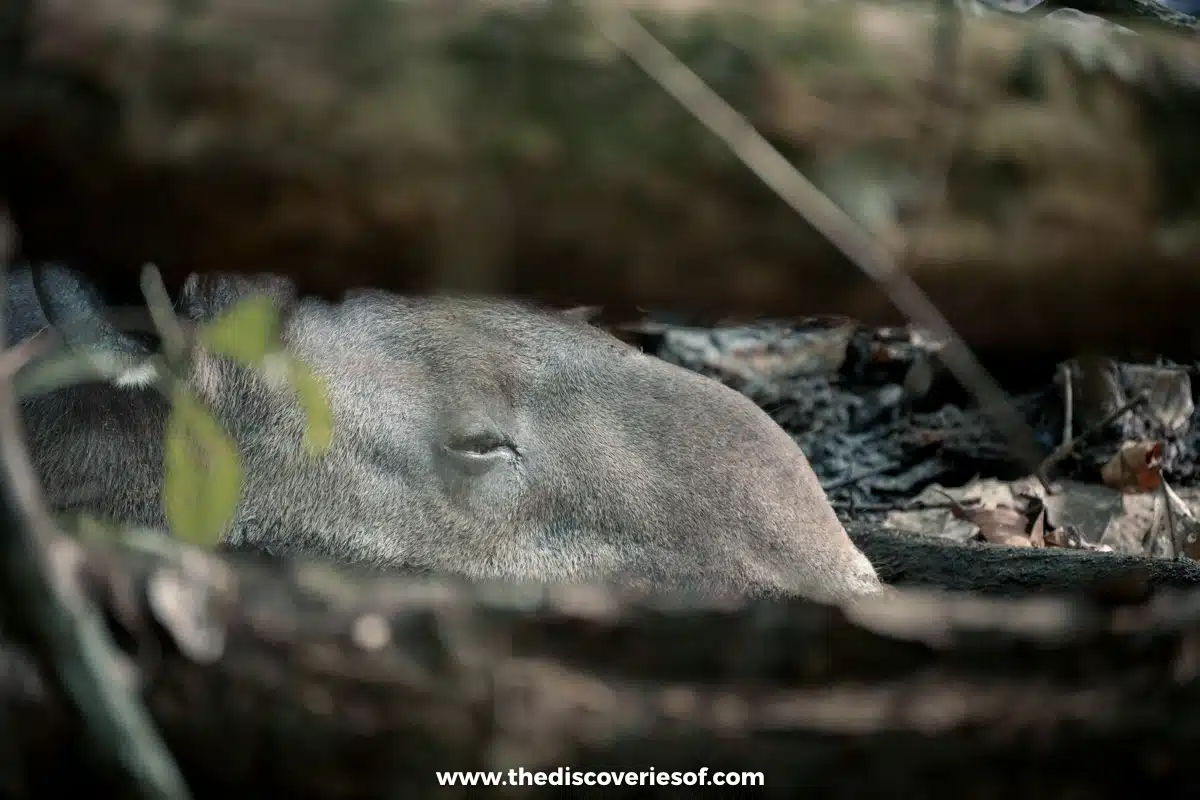
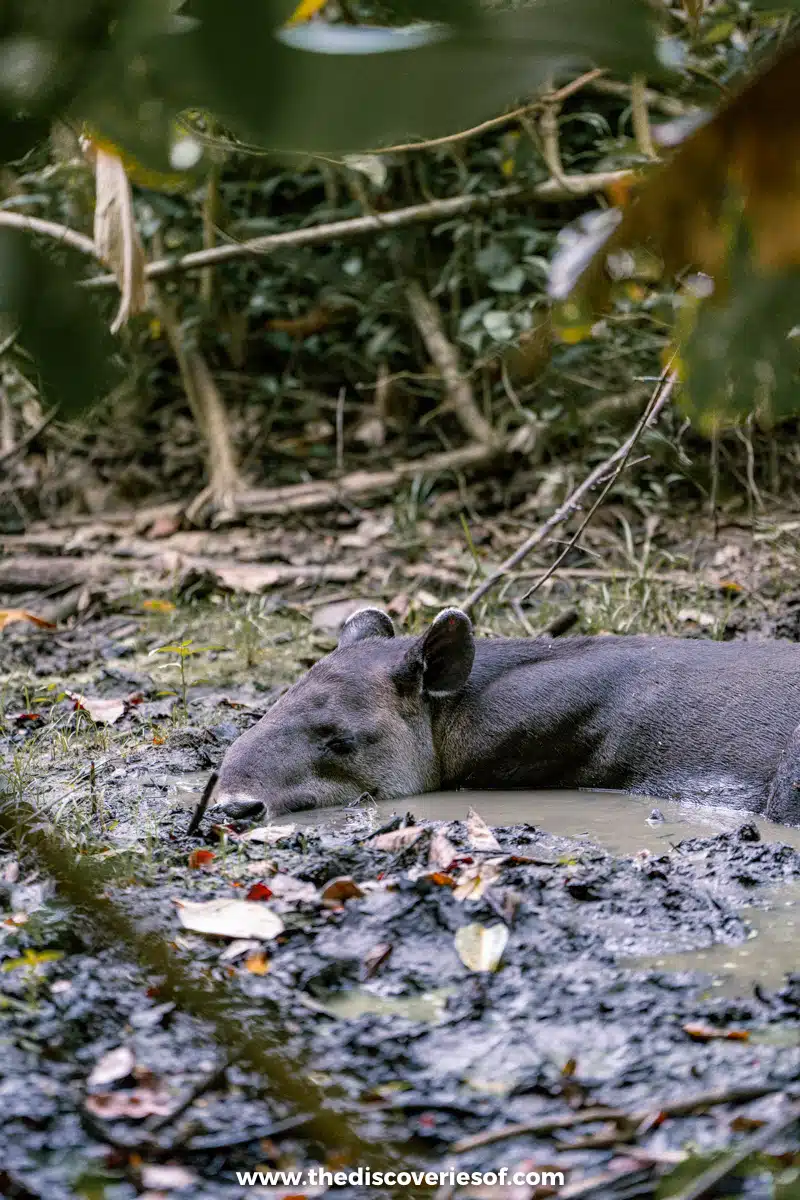
Baird’s tapir is one of the largest creatures in the park and also one of the most fascinating. This plant-eating animal has called parts of North, South, and Central America home, dating back millions of years (true story).
What exactly is a Baird’s tapir? It’s similar to a rhino but a bit smaller and with a long snout, which is why many people think they are anteaters (they’re not).
Locating one of these is harder than you may think. They even hide down in the water using their long snout.
I lucked out and saw one just minutes from Sirena Station.
Sloths
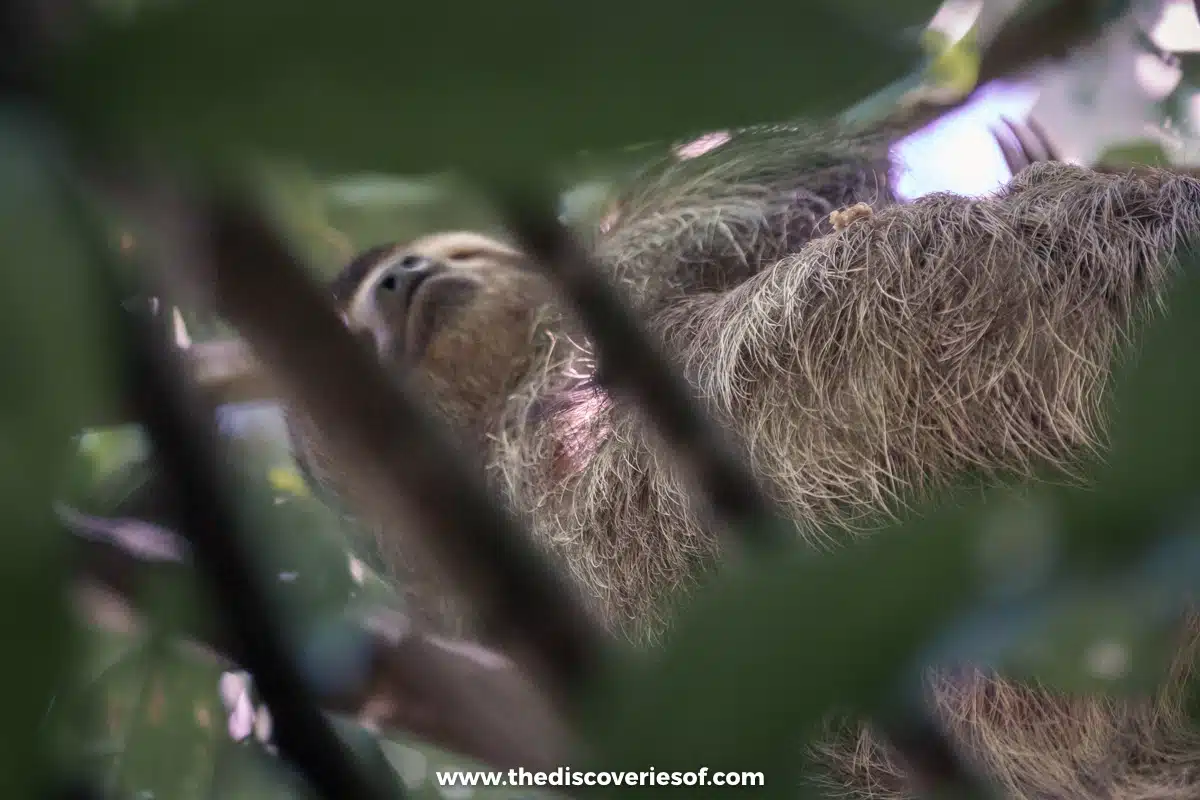
For many visitors, sloths are the most exciting wildlife to spot in Corcovado National Park.
The incredible mammals have a perma-grin on their face and move in slow motion, making them a clear fan favourite. Lucky for you, there are two types living here.
Two-Toed Sloths
These are the largest sloths, weighing as much as 8 kilograms (17.6 pounds). You may see them high in the trees throughout the day as they slowly meander their way through the rainforest canopies.
Three-Toed Sloths
Like their larger counterparts, three-toed sloths live almost exclusively up in the trees. They have one additional toe (hence the name), giving them an extra one of those signature curving claws.
Monkeys
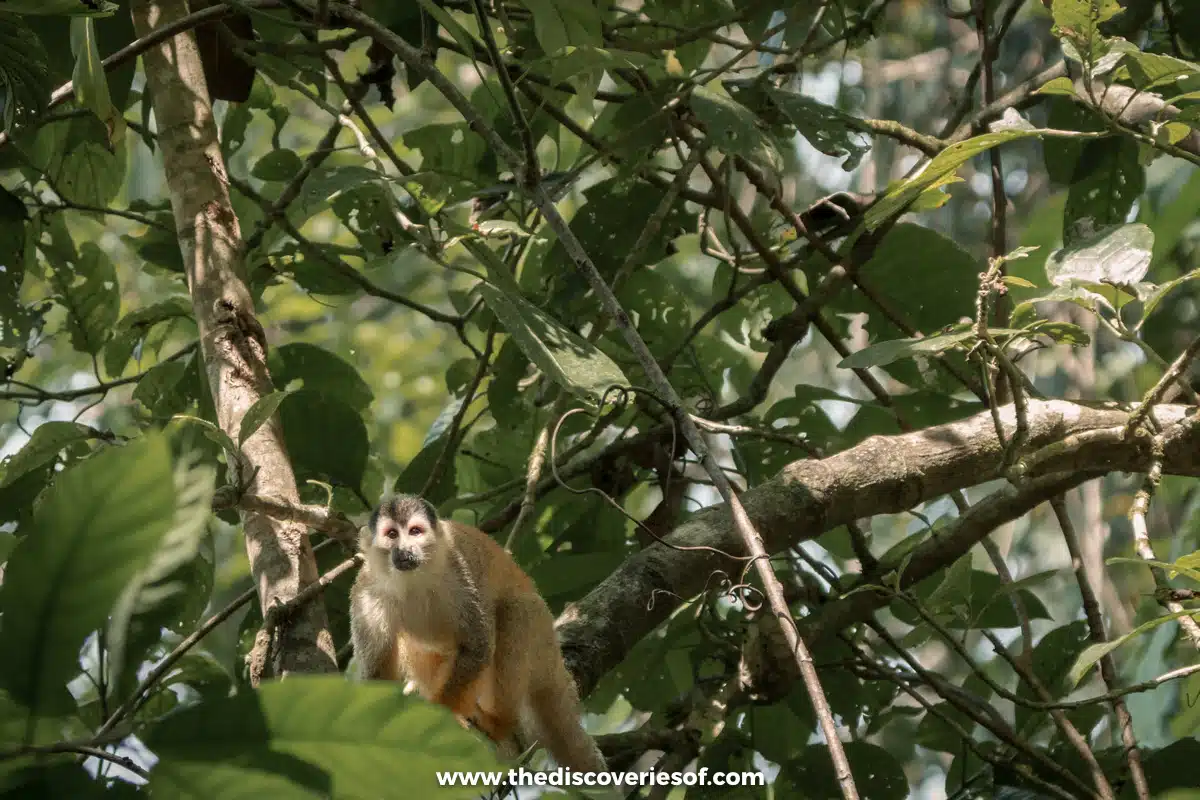
One thing is for certain when you visit Corcovado National Park, you will see monkeys. Facts.
But which species are here exactly? There are 4 types in the park. Here’s a quick look at each.
Central American Squirrel Monkeys
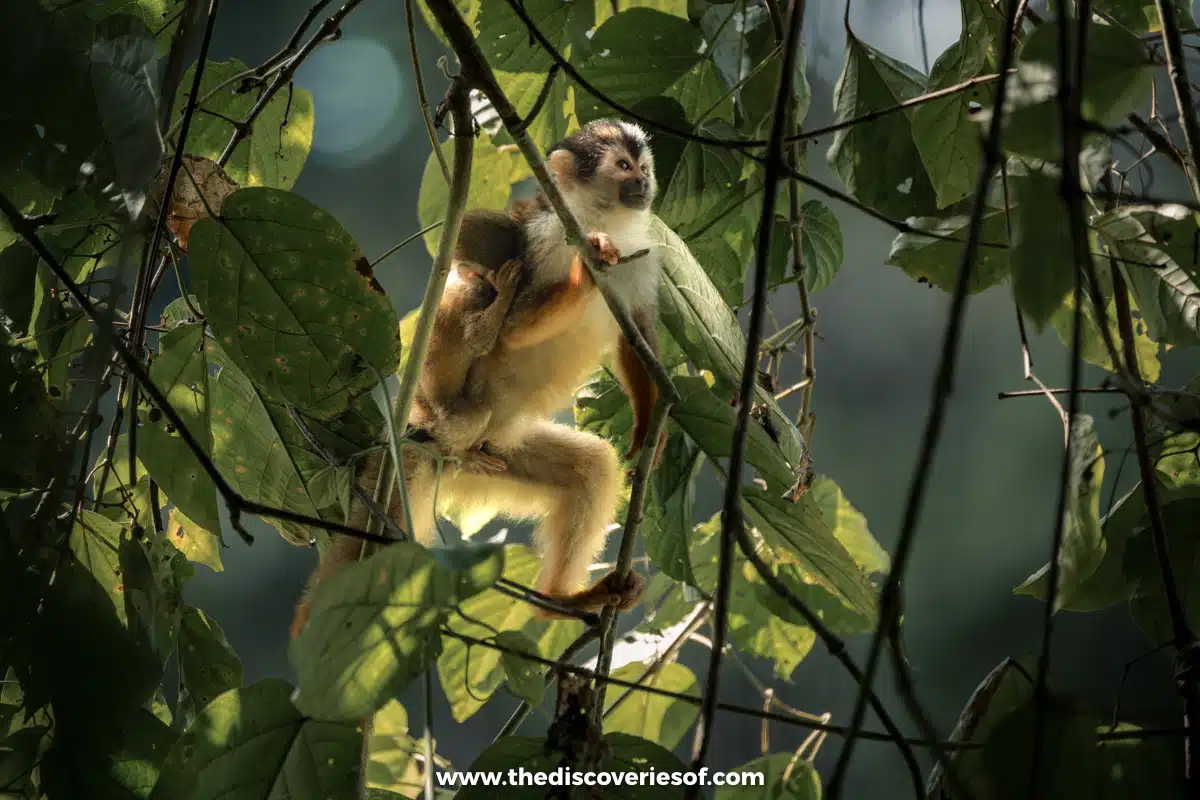
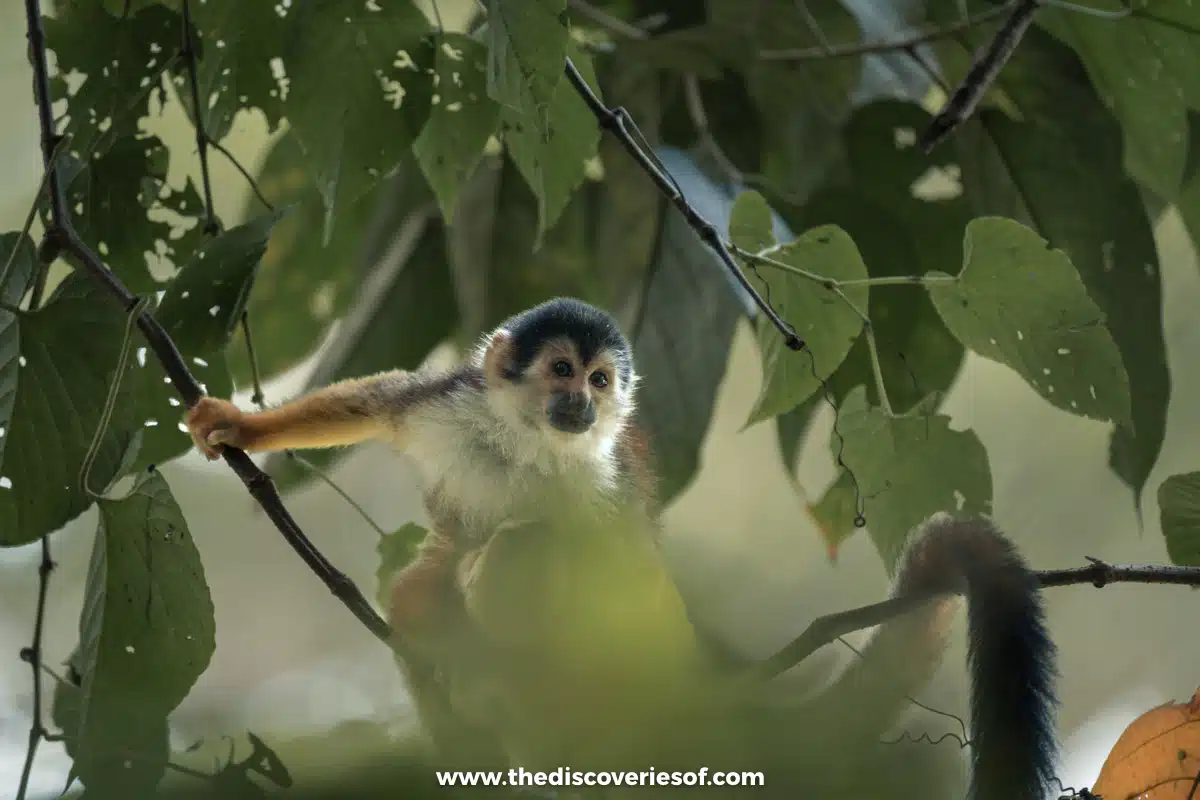
These small creatures are the most common monkeys in the park, so you’ll see plenty of them hanging out in the trees. They only weigh about .5 kilograms (1 pound) and have a pattern on their face that looks like a mask. Adorable.
White-Faced Capuchins
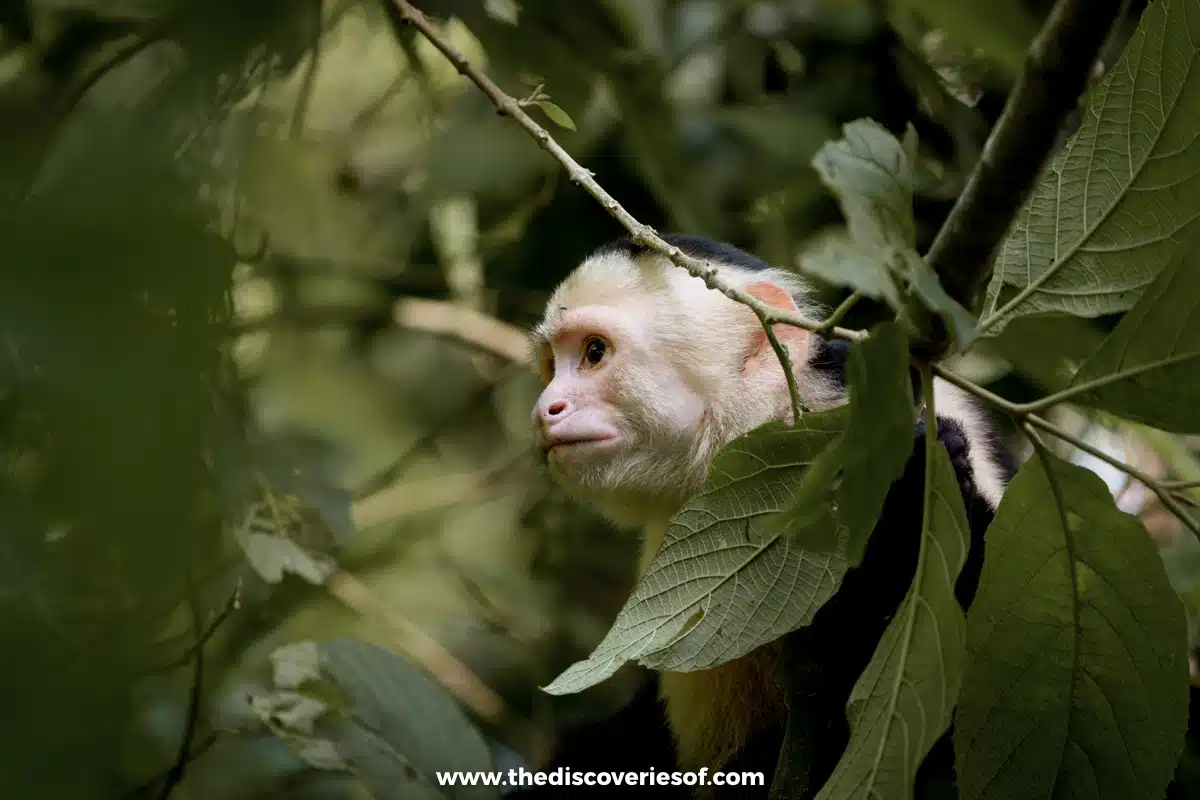
White-faced capuchins are the cute but feisty monkeys you’ve likely heard stories of stealing people’s food, phones, or entire day packs (I saw it happen in Manuel Antonio).
Capuchins are diurnal, so you see them running around the canopies throughout the day.
Top Tip
Capuchin Monkeys’ fur pattern is said to resemble the famous Capuchin Monks’ wardrobes, hence the name.
Spider Monkeys
Spider monkeys are the ones you’ll find using their long tails and arms to fly from tree to tree in Corcovado. They’re much bigger than the capuchin or squirrel monkeys, many getting as large as 9 kilograms (20 pounds).
Howler Monkeys
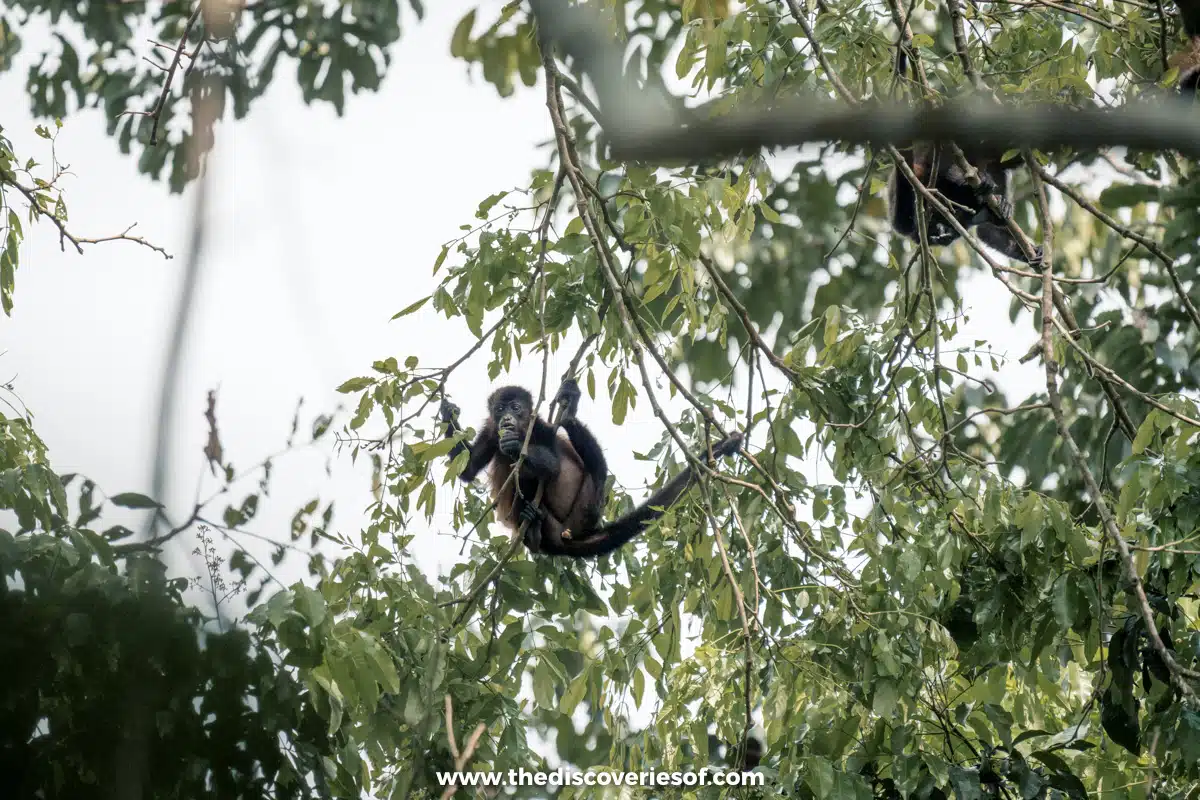
These large monkeys have the most memorable sound you’ll hear in the park (it’s almost mechanical). They get noisy, like 140 decibels noisy, making them one of the loudest animals in the world.
They’re not as fearless as they sound, however, and you’ll likely need binoculars to spot them high in the trees.
Anteaters
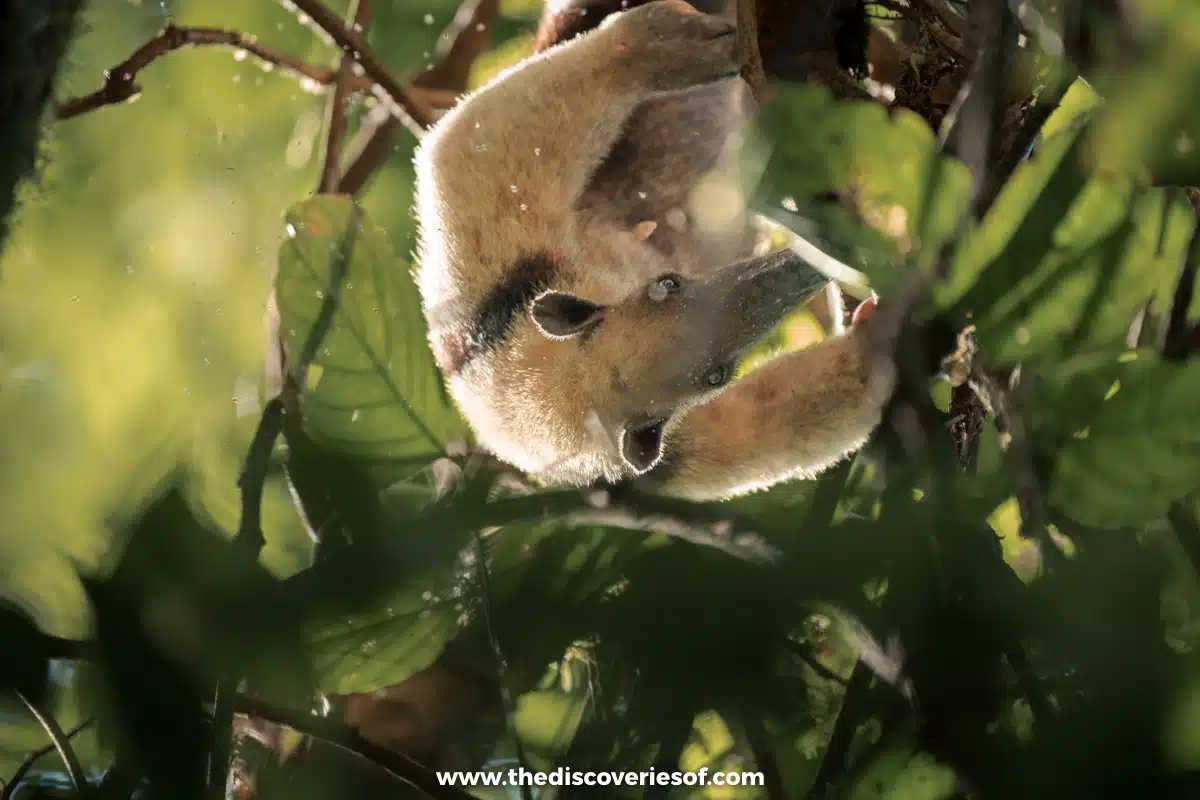
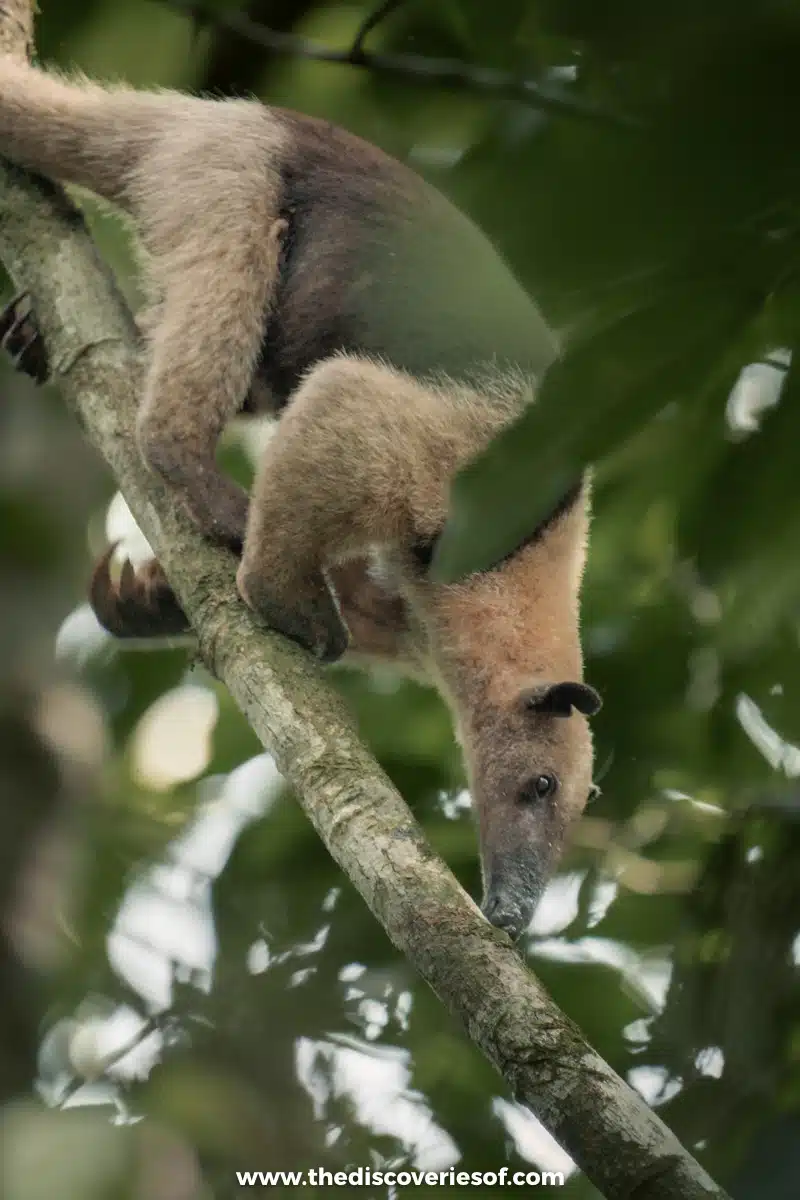
Another adorable animal that people look for in Corcovado is the anteater. There are actually several types of these in the park, and the sloth is their close relative.
Giant Anteater
If you see one, consider yourself lucky. There are only 5,000 in existence as such, they’re an endangered species.
Though they get up to 2.4 metres (8 feet) long, they are hard to find. They are most active at night and stay to themselves.
Silky Anteater
These tiny insect-gobbling creatures are only 18 inches long and basically never leave the treetops. Use a telescope or binoculars to spot one.
Northern Tamandua
Also found mostly in trees, you can see these run around on the forest floors night or day. Their fur has a cool 2-colour pattern that looks like they’re wearing a sleeveless shirt.
Coatis
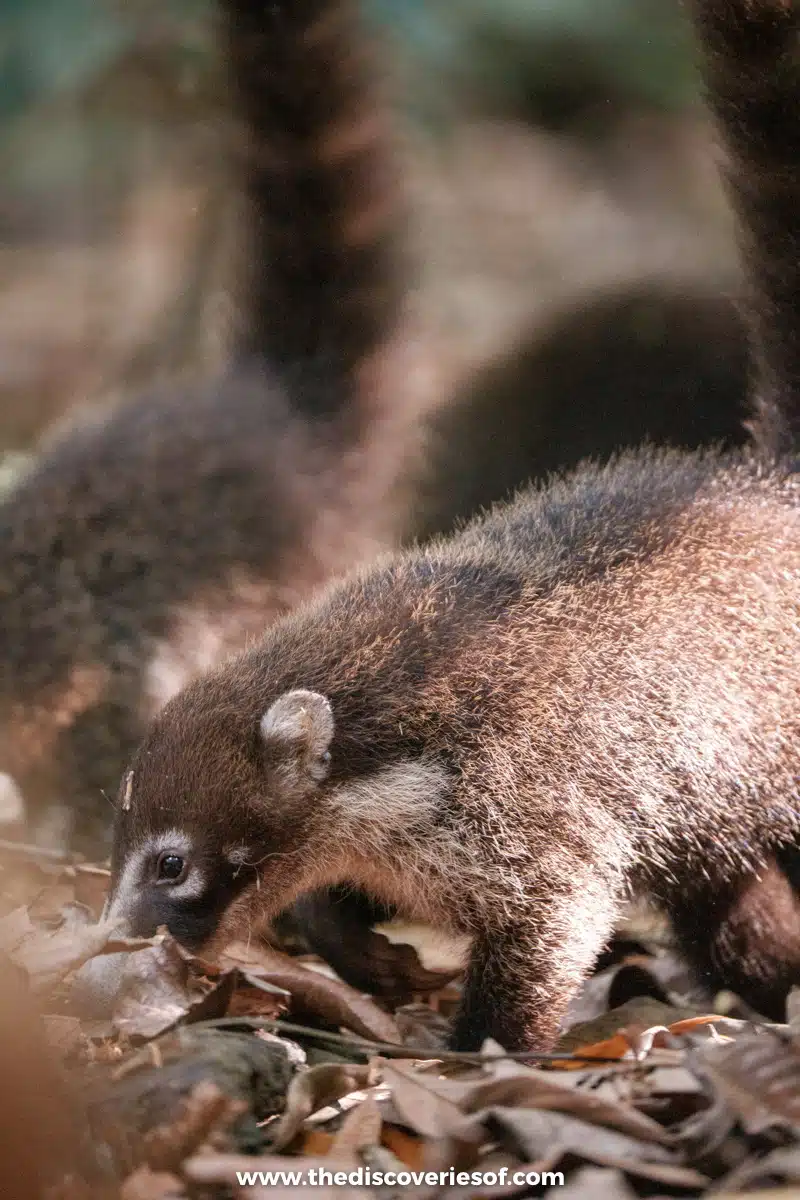
The raccoon-like coatis are an animal you’ll almost certainly see roaming around the park. White-nosed Coatis are the type you’ll see here, with signature white rings around their nose and eyes.
Watch for them in the morning when they’re looking for fruits and creepy crawlies like lizards or insects on the ground. They like to scavenge for food, so keep your belongings close to you and away from them.
Peccaries
If you see what looks like a small wild pig darting about the park, these are peccaries. The white-lipped peccary is the most common and typically moves around with their herd.
Like the much larger wild boar (not found in Corcovado), they can be aggressive, especially around babies.
Top Tip
Keep your distance at all times as they have a painful bite.
Hummingbirds
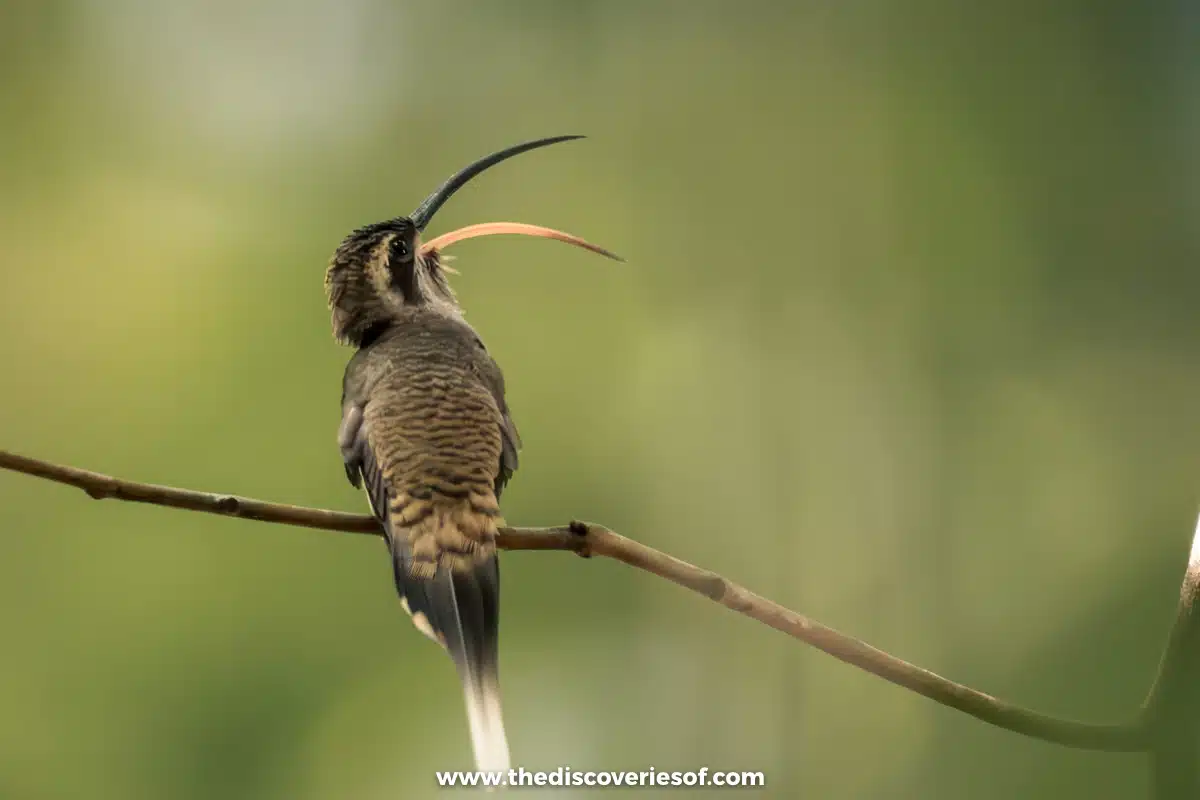
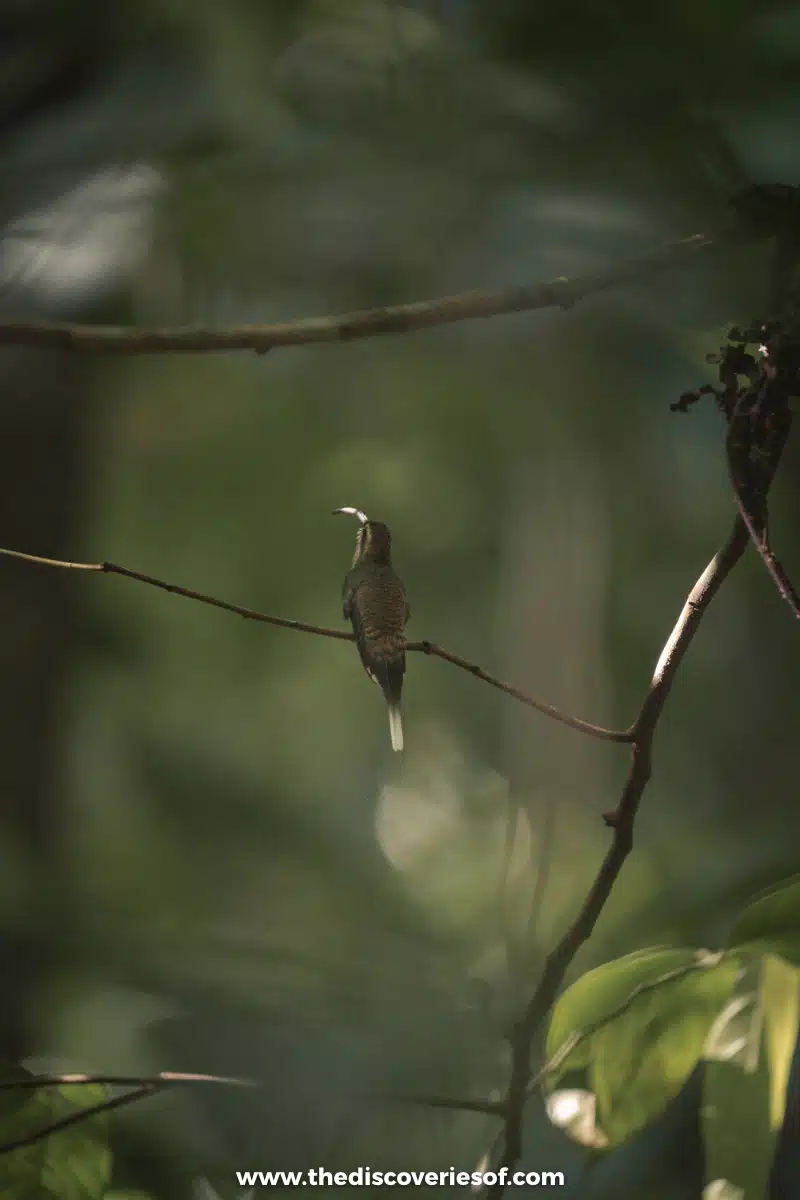
There are hundreds of birds in Corcovado, and hummingbirds are one of the coolest to see. While spotting the endangered mangrove hummingbird is nearly impossible, you will see species like the rufous-tailed hummingbird around the park.
I had a fun back-and-forth with one, where our tour guide used his phone to call the bird over with hummingbird noises. It was there in a flash, defending its turf, and I captured some amazing photos you can see on the ‘Gram.
Toucans
Keep your eyes open for the famous black birds with their giant, colourful beaks in the treetops at Corcovado.
They can be pretty big and make unusual noises that some describe as snoring.
Poison Dart Frogs
Black and green poison dart frogs do live in the rainforests of Corcovado National Park. Keep your eyes open along the trails, especially when you get near rivers and waterfalls.
Their skin emits a toxin that, if touched, may cause serious health problems for humans. Interestingly, they actually develop their poisonous exterior from the insects they eat.
American Crocodiles
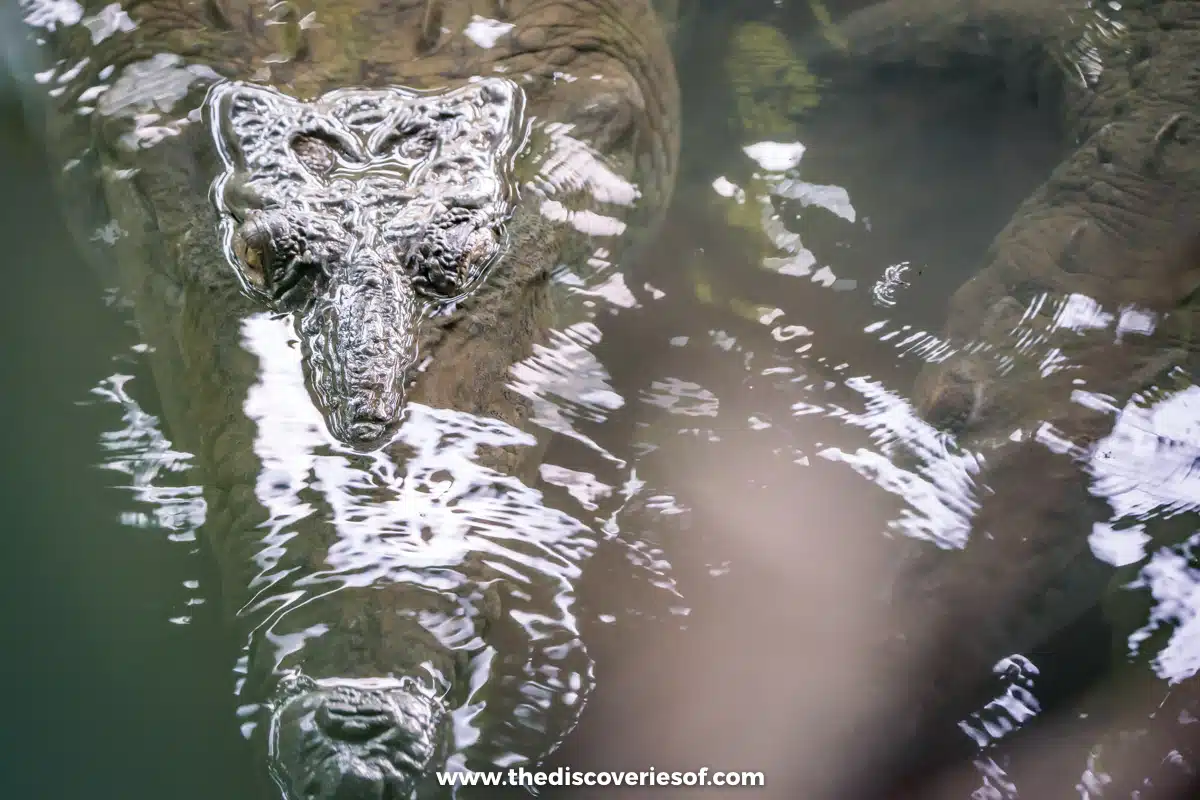
These long, sometimes deadly reptiles live in the rivers and lakes around the park. It’s common to see them, and you want to be very careful anytime you cross a stream.
I had a bit of a scare when I hopped out of the boat at San Pedrillo, only to see a massive croc just metres from where I walked. Yikes.
What to Expect From the Different Ranger Stations
There are 6 ranger stations at Corcovado. Here’s a look at everything you need to know about each.
La Leona
Best for: Access From Puerto Jiménez
Overnight Stay: There are no dorms, but La Leona Eco Lodge is a nice option for private bungalows.
The young forests around La Leona are truly a blessing because they attract butterflies, birds, and animals in droves.
La Leona is the closest major station to Puerto Jiménez, making it a popular destination for travellers who want to plan a day trip or overnight to Corcovado National Park.
Most visitors arrive here from Playa Carate by hiking northwest, about 3.5 kilometres.
Once at the station, you can head to the beaches or hiking trails. The popular 4.8-mile out-and-back Madigral Trail is accessible here and perfect for a day hike.
As with most ranger stations, amenities are basic. There are bathrooms with potable water and toilets. But you won’t find any food for sale.
Sirena
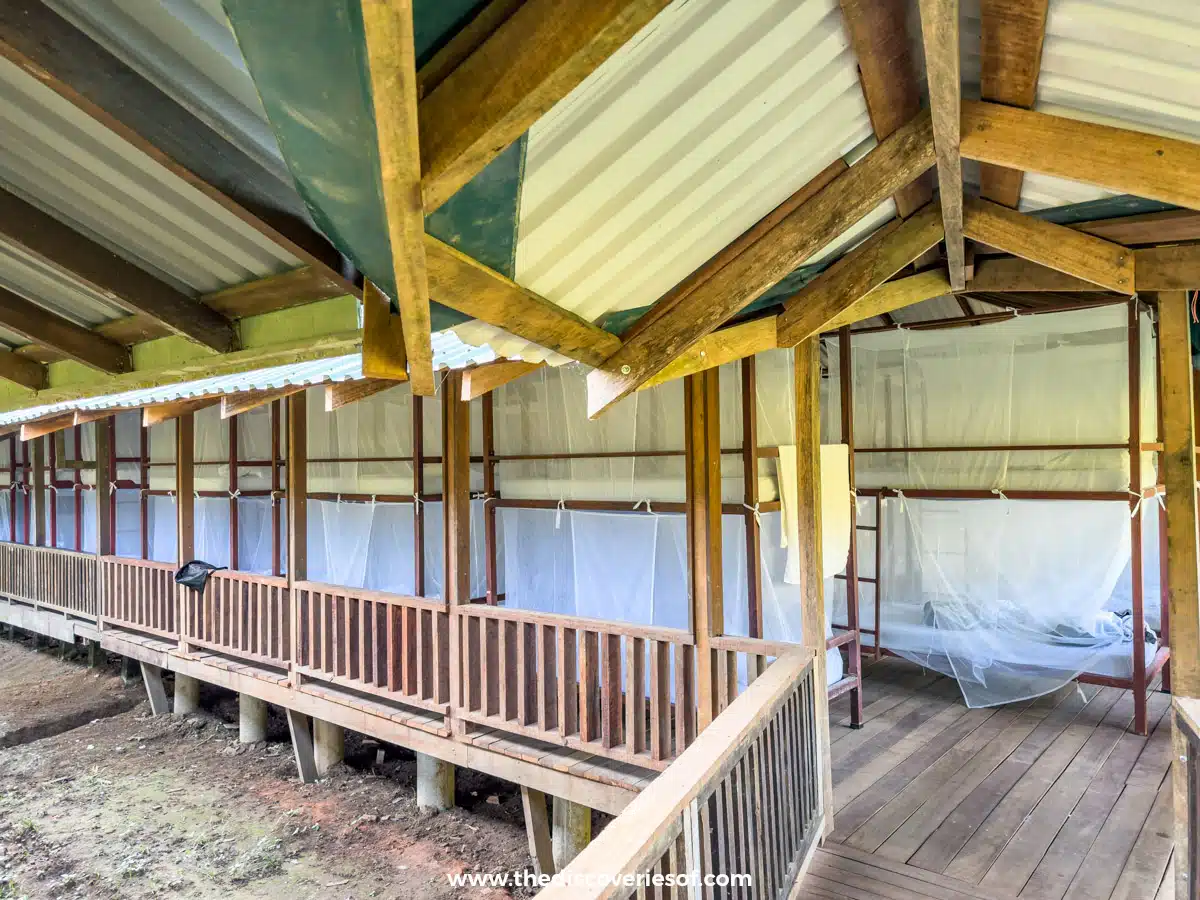
Best for: Wildlife Viewing
Accommodations: Sirena Ranger Station Dorms (I arranged through Sukia Travel).
Like La Leona, La Sirena has a lot of youthful flora and fauna (secondary rainforest) because it was actually a small farming town until the 1970s.
Now, the area around the ranger station is a lively secondary forest with some of the best wildlife viewing in Costa Rica. Why? For starters, it’s situated strategically between rivers and the ocean.
Animals stay in this region to find water, food, and shelter – so it’s a perfect place to bring your wide lens and binoculars.
You won’t find the most epic hikes here, but sometimes minimal effort and maximum reward are just what you need. Expect to see coatis, Baird’s Tapir, sloths, and lots of other amazing creatures while you’re here.
If you plan to spend the night, this is the spot. The dorm is the largest in Corcovado. They aren’t luxurious, but they set you up with the best wildlife viewing opportunities in the park.
San Pedrillo
Best for: Challenging Hiking Trails and Adventure
Accommodation: Basic dorms but there are also mid-range and luxury accommodations near the station. SCP Corcovado Wilderness Lodge is a popular splurge option with a restaurant and bar.
San Pedrillo is the station where you’ll find a lot of adrenaline junkies and backpackers looking for epic primary rainforest hikes and remote beaches.
The trails here are a bit more challenging, so you’ll want to plan ahead. Bring your best hiking gear, water, and a compass in case you get separated from your group.
It’s located west of La Sirena, just before you hit Playa Liorona, and it’s the fastest to reach from Drake Bay.
Los Planes (Green Paradise)
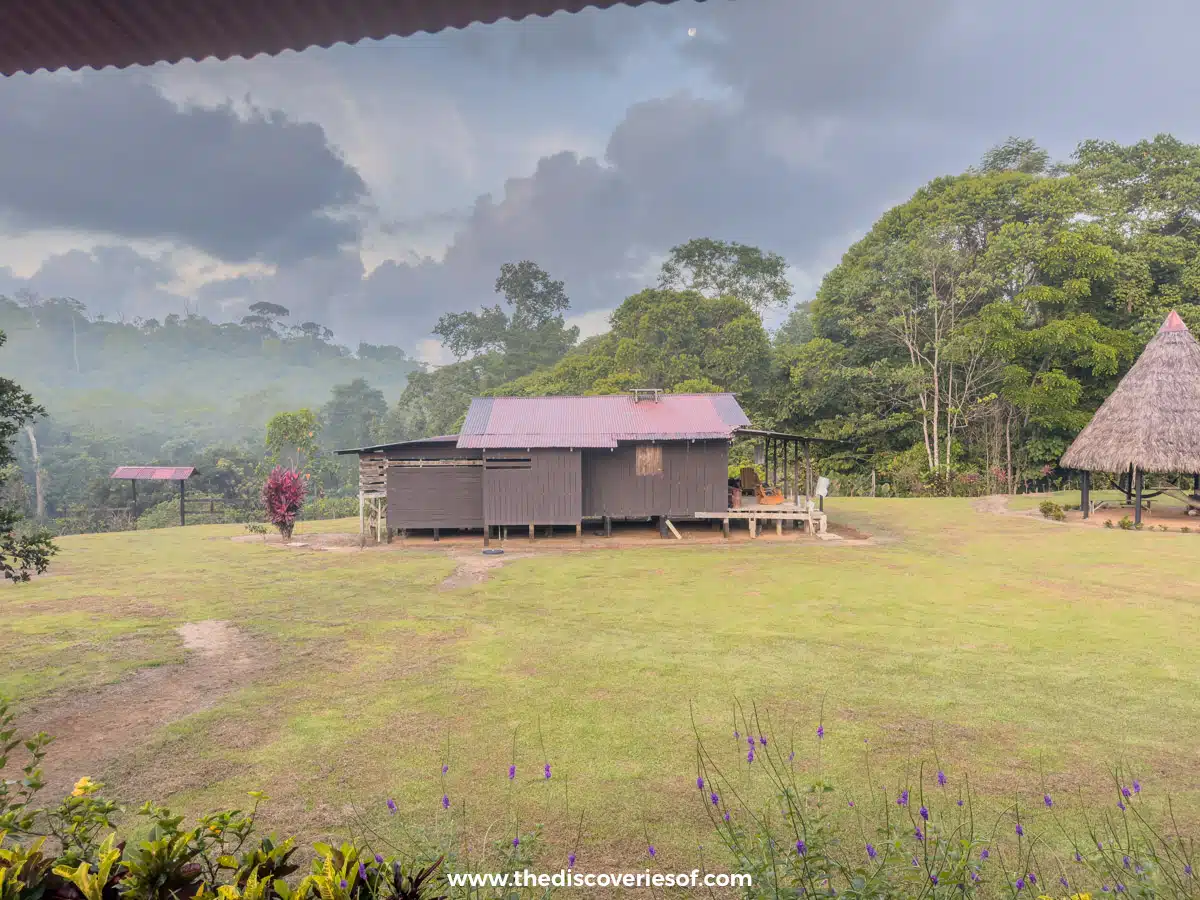
Best for: Remote Jungle Forests
Accommodation: Small dorms, which we arranged through Sukia Travel.
This is where we spent our second night, and it was fantastic. Partially because I was on my last legs after hours of hiking, but it also showed a side of the park most tourists don’t see.
Sukia Travel is one of the few tour companies that use this ranger station. Huge advantage. Choosing the isolated location as one of the resting stops gives you a glimpse into what Corcovado was like before eco-tourism became a big thing here.
Los Planes offers sustainable travel for eco-conscious tourists interested in experiencing 4,000-year-old primary forests while supporting local communities (instead of international hotel brands).
The dorms were nice enough, with only six guests per room and near some of my favourite hiking trails.
El Tigre
Best for: Supporting a Local Village
Accommodations: You can’t stay overnight at El Tigre, but you can find mid-range accommodations in Dos Brazos de Rio Tigre, the nearby town.
El Tigre is a small entrance to the park near Dos Brazos de Rio Tigre. It’s a newer station with very few amenities, but accommodations like Bosque del Rio Tigre Lodge are nearby.
You can access El Tigre Trail from here, which is a challenging 8 kilometre hike you can do with a guide.
Find local guides at the Conservation Association of Dos Brazos de Rio Tigre in the town.
Los Patos
Best for: Getting Away From it All
Accommodations: You can’t stay overnight at Los Patos.
Los Patos is a very remote ranger station that you have to hike into from Las Palmas. It is known for jungle hikes and indigenous villages nearby.
Hikes in Corcovado National Park
Sirena Trail to Naranjo Trail
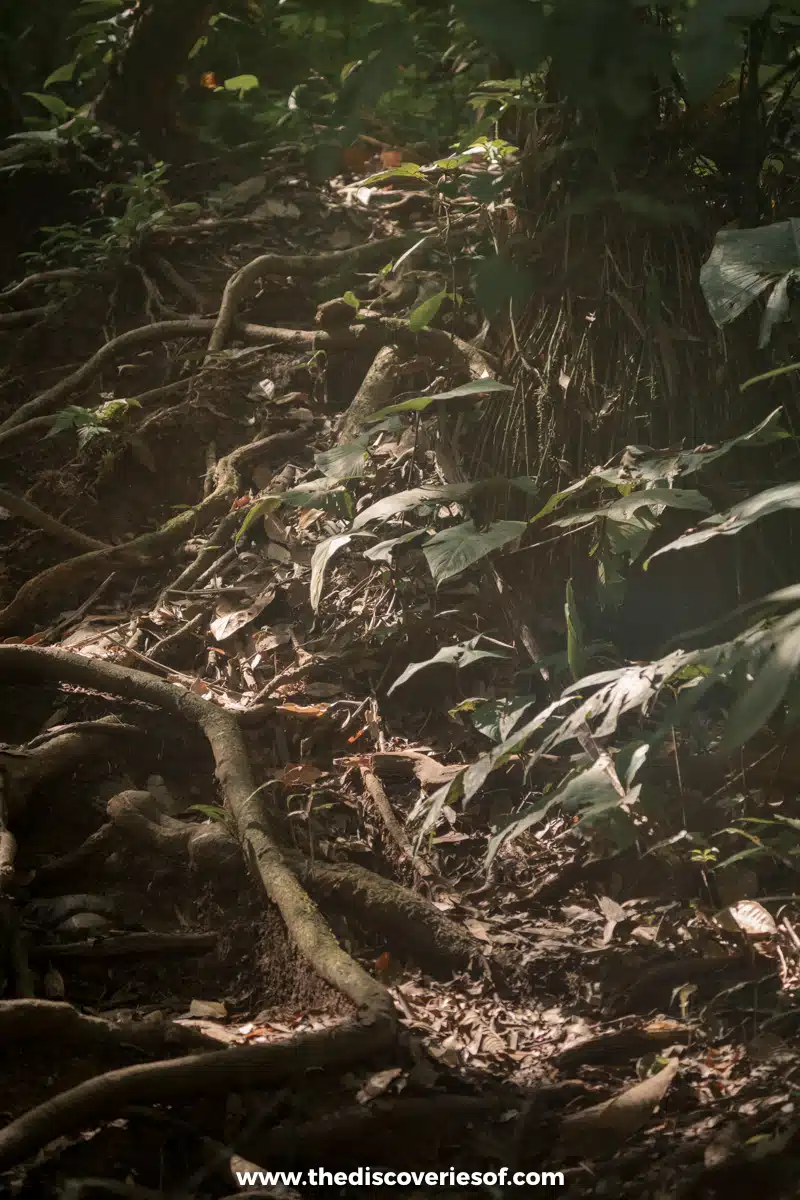
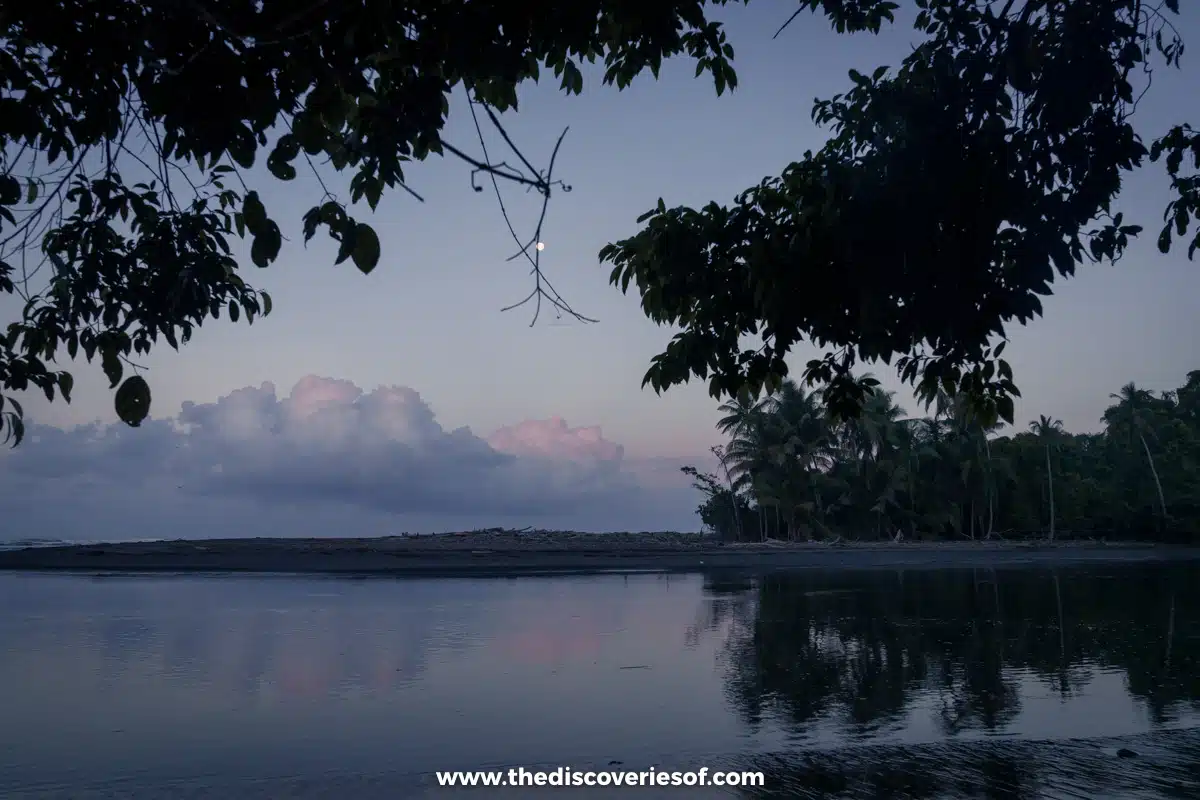
Distance: 2.1 Miles
Where to Start and Finish: Sirena Station
Looking for a relatively easy hike with a huge payoff? Sirena Trail is your best bet.
If you’re visiting on a day trip, this is the hike you want to schedule. But it’s also the perfect way to familiarise yourself with the park and its abundant wildlife before a longer stay.
Sirena Trail to Naranjo Trail is a mellow 2-mile loop that covers mostly flat ground around the beach and in the secondary rainforest behind the ranger station.
Wildlife is everywhere. However, I’ve heard groups going hours (if not their whole trip) without seeing either.
Top Tip
Keep your eyes open for colourful birds, like toucans and macaws. There are also sloths, howler monkeys, spider monkeys, and anteaters.
San Pedrillo to Green Paradise (Los Planes)
Distance: 6.4 Miles
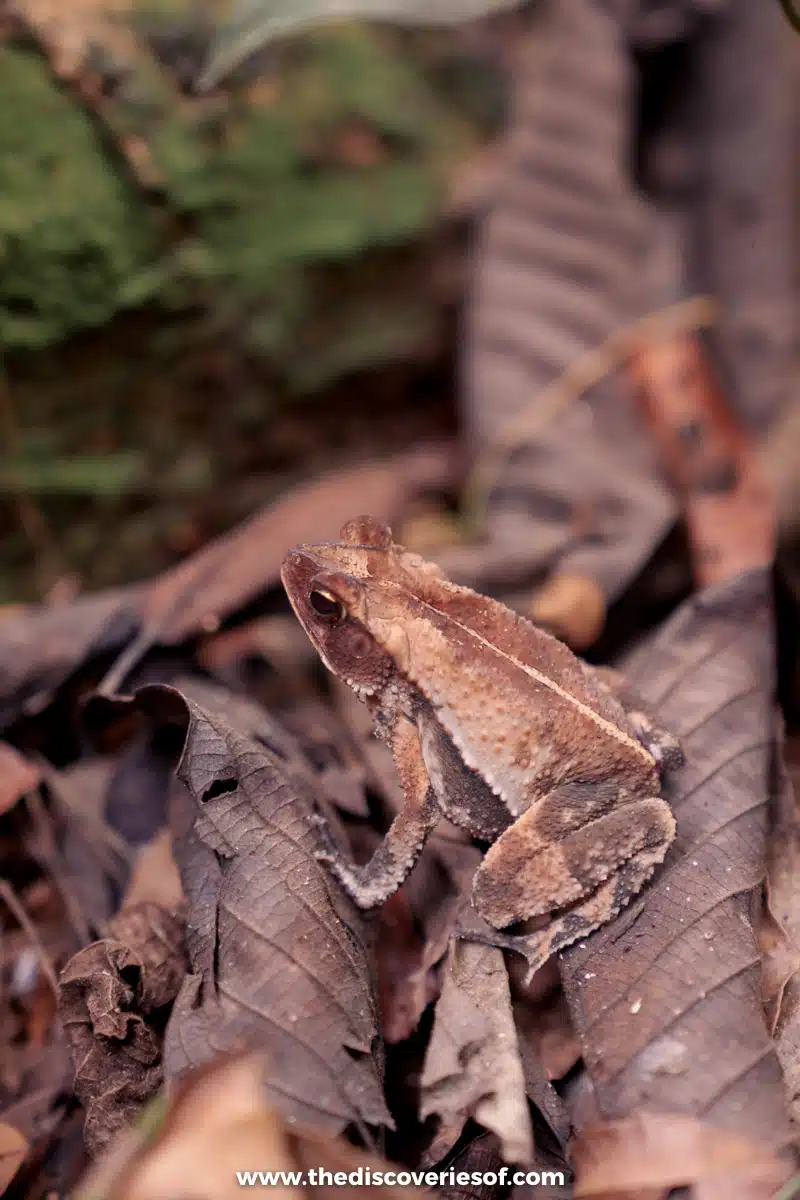
Where to Start and Finish: Begin at San Pedrillo Station and end at Green Paradise Dorms
This one isn’t for the faint of heart. In fact, there were a few moments during our walk from the 2 ranger statutes of San Pedrillo to Los Planes where I questioned my stamina and, frankly, my sanity.
That said, tromping up and down the old-growth rainforest trails was a highlight of the trip… looking back.
You won’t see as much wildlife on this trail as you do in Sirena, but there’s still plenty of amazing scenery, and it’s the best way to experience 2 of Corcovado’s best ranger stations.
Top Tip
The point-to-point hike took us about 3 hours, and you need to bring your best hiking boots and poles. But the lush forests, rivers, and hillsides offer some of the most remote landscapes in the park.
Los Planes to Playa Colorada
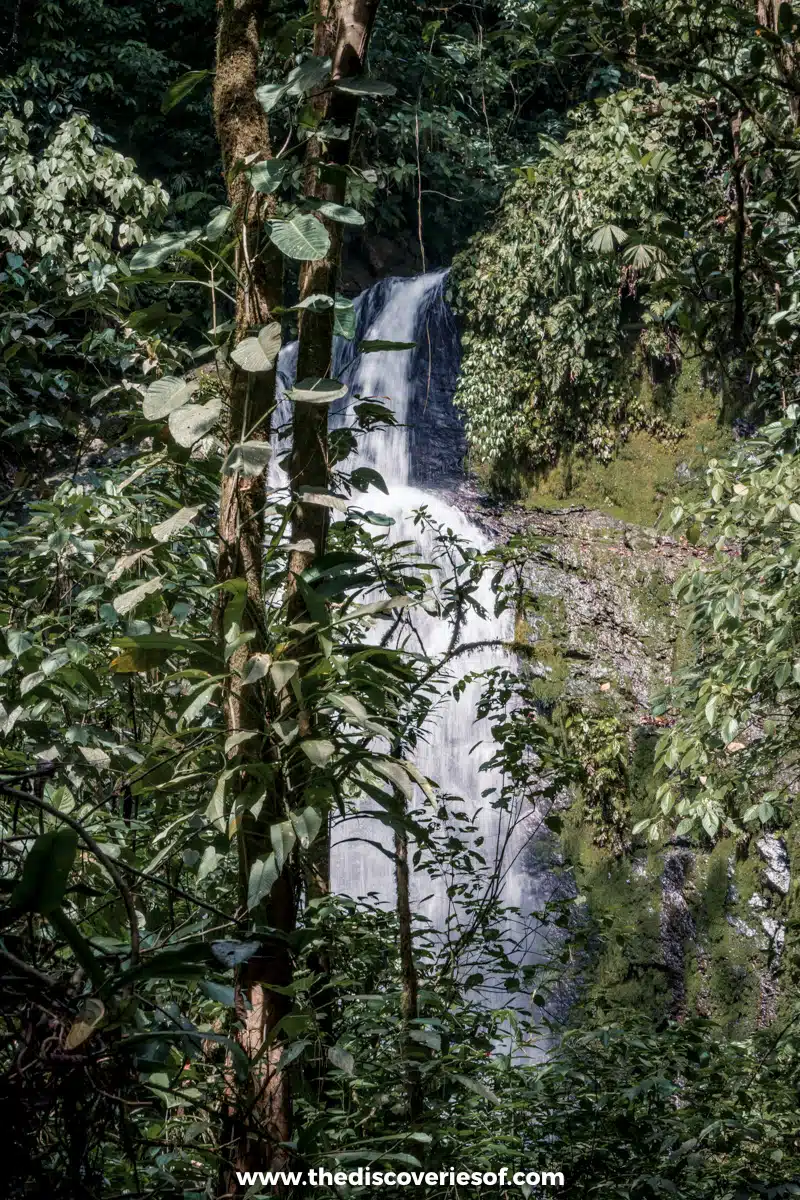
Distance: 4.78 Miles
Where to Start and Finish: Begin at Los Planes Station and end at Playa Colorada
Another way to see the remote jungles near Los Planes is to hike this trail to Playa Colorada.
It’s a relatively easy hike and only 7.7 kilometres (4.78 miles) long. You won’t encounter the same types of extreme ups and downs as on the San Pedrillo route, either.
You get to see primary jungles dating back to 4,000 years, with towering canopies home to big and small surprises. Keep your eyes open for lichen, colourful frogs, and massive snakes and spiders crawling above you.
However, my favourite part about this hike was a detour to a second trail to a secret waterfall. Walk the trail alongside Rio Aguitas towards Rio Aguitas Farm, where you’ll find epic waterfalls.
Wading in the river was so refreshing in the early afternoon heat.
Once you reach Playa Colorada, you’ll find a remote beach with beautiful views of the Pacific Ocean. It’s the perfect ending to a 2-night trip.
Know Before You Go: Practical Tips to Plan Your Corcovado National Park Trip
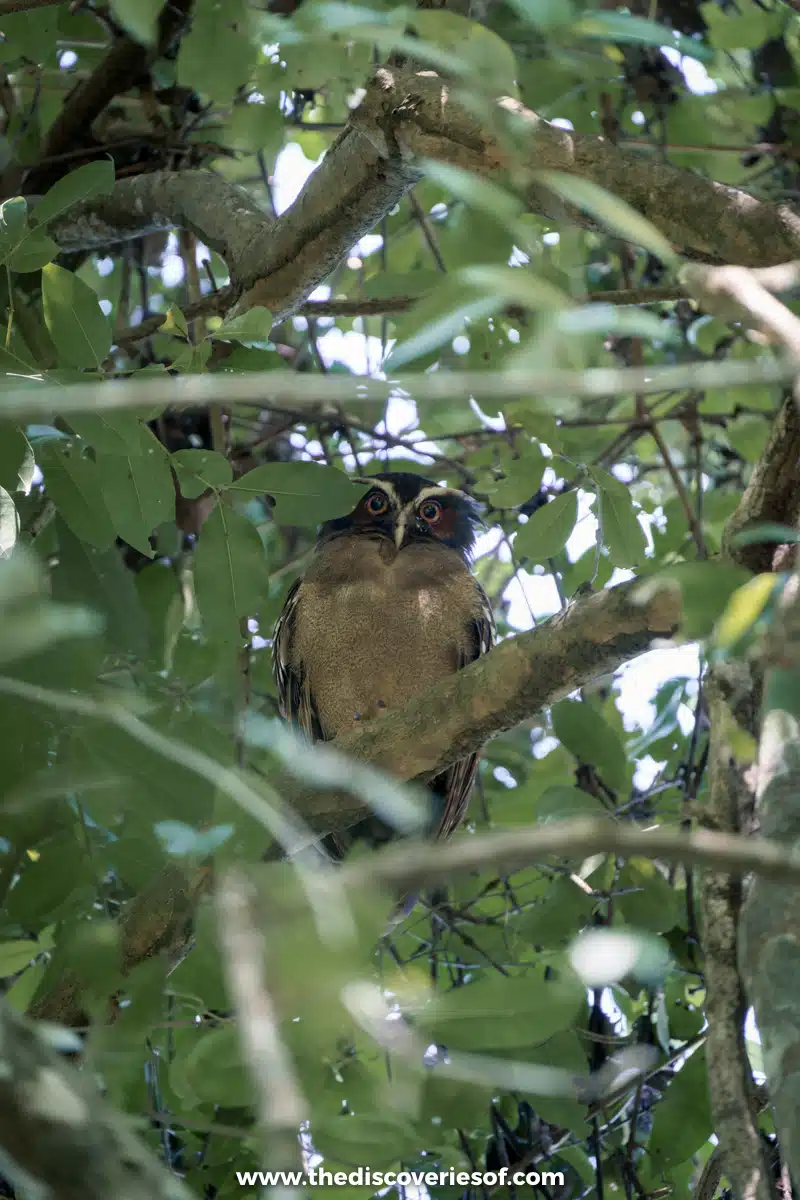
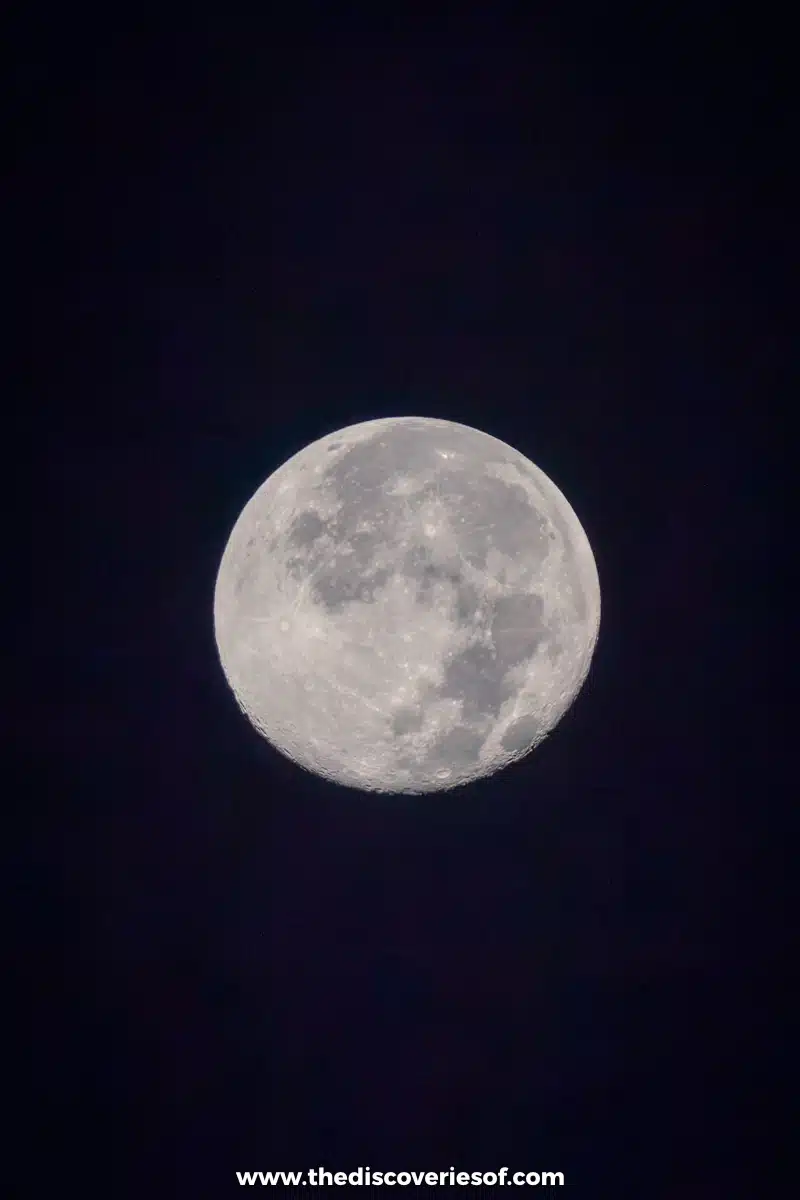
Top Tips
- Be candid with your guide about what exactly you want from your tour, so they can pair you with like-minded travellers.
- Reserve your tour and any transportation to the meeting point near Drake Bay as far ahead as you can.
- Ride in the front of the water taxi. It’s super bumpy, but the views of the Osa Peninsula make you forget all about that.
- Bring earplugs or headphones for the dorm rooms. Don’t be that person banging on people’s bunk beds (true story) because you made a rookie mistake.
- Carry a refillable water bottle (no single-use plastic is allowed).
- Hiking poles are a must unless you’re incredibly nimble on your feet.
- Most stations don’t sell food (besides Sirena).
- Be very careful of poisonous snakes. Attacks are rare, but you have to watch the path in front of you.
- If you go swimming (or even wading), be aware that crocs and sharks live in these waters.
- Africanized bees do live in this area and can attack. If this happens to you, shield your face and run (without swatting) like your life depends on it. Seriously.
Typical Cost of Travelling in Corcovado
Corcovado prices vary a whole lot, depending on the tour you choose.
My advice? I went on a 3-day, 2-night excursion with Sukia Travel, which cost $615 (₡315,600). This included transfer from Drake’s Bay to Sirena, 4×4 transportation to hikes, a seriously amazing guide, meals, accommodations, insurance, and Corcovado National Park tickets.
How Long to Visit in Corcovado?
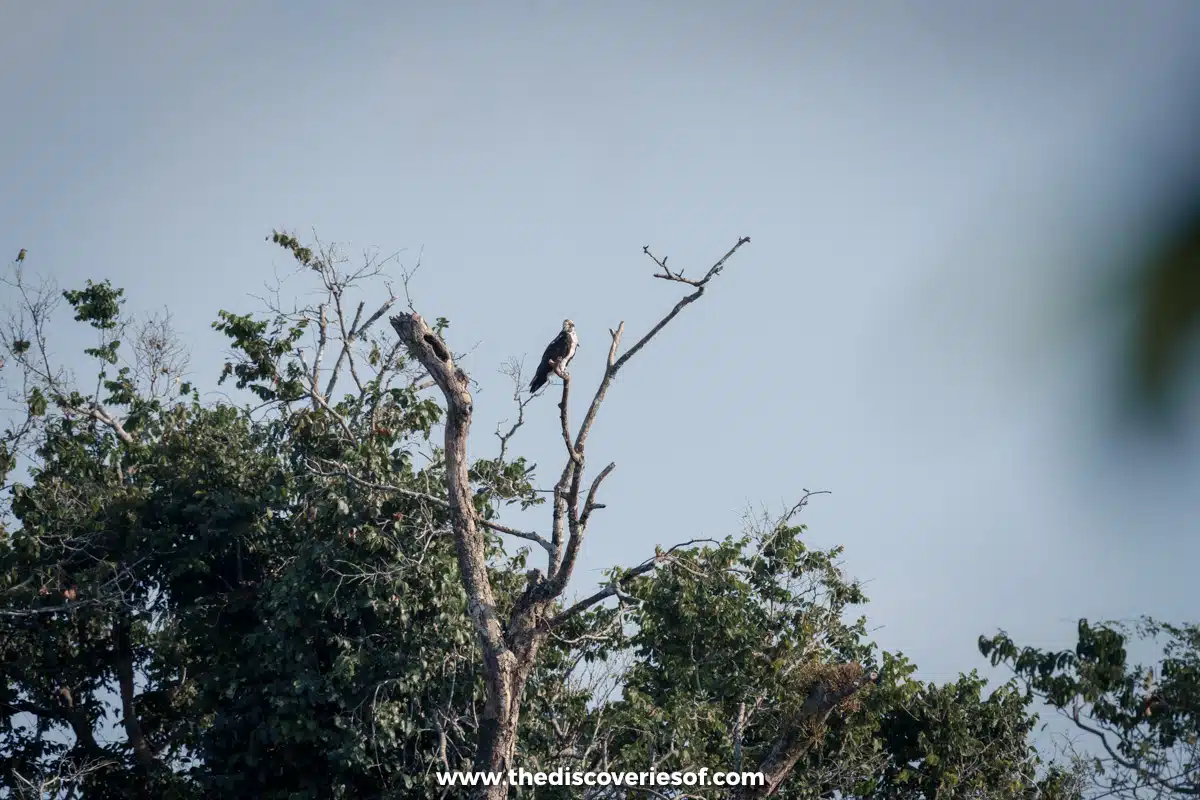
Deciding just how long to stay in Corcovado is no easy task. Check out my quick guide to visiting on a day trip, overnight, and multi-night stay.
Day Trip
If you’re short on time and only have a day, head to Corcovado to see an unbelievable amount of wildlife, even on a day trip.
Both Sirena and La Leona stations have access to incredible wildlife viewing trails, but Sirena offers the most in a short amount of time.
To get to Sirena Station, arrange boat transportation from Drake Bay. You’ll need to be ready at around 6 am before taking a 1-1.5 hour boat ride over.
Overnight Trip
An overnight trip is perfect if you want to experience more of the park without committing to a more extended stay. This is also the sweet spot for travellers who fancy a small taste of adventure without a challenging trek to another station.
A woman in our tour group did this and got to experience the same itinerary as us on the first day, hiking the incredible trails around Sirena Station.
You also get to walk around the park early in the morning when animals are literally everywhere. Then, you’ll jet off on a boat around 1:30 p.m. while the rest of the group continues on to San Pedrillo.
Two-Night Trip
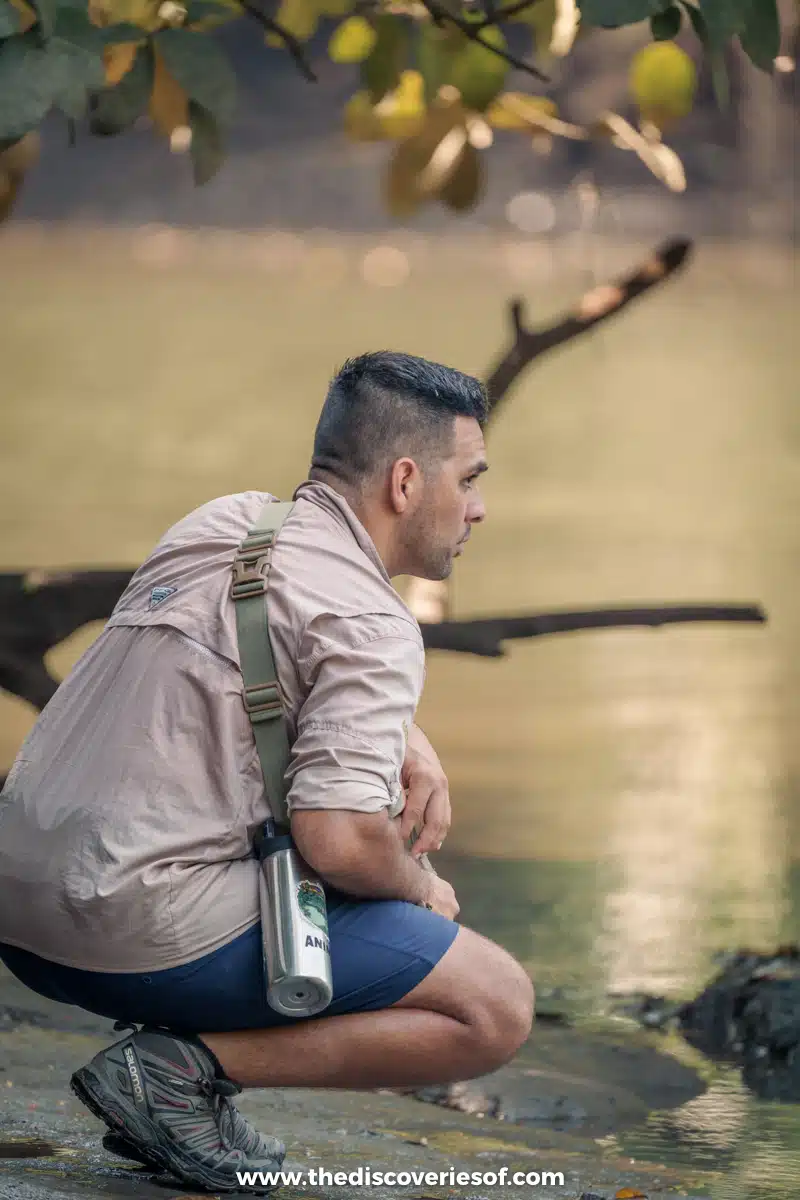
A two-night trip lets you visit several ranger stations, hike through primary and secondary forests, and listen to wildlife from the accommodations at night. It also offers a peaceful experience in more remote sections of the park.
This is the itinerary that I followed, and I absolutely loved it. We woke up early each day (5 a.m.) and explored nearby trails before embarking on longer hikes that covered large sections near Sirena, San Pedrillo, and Los Planes ranger stations.
Best Time to Visit Corcovado
Choosing when to visit Corcovado National Park plays a large role in your overall experience.
If it’s your first time visiting, I really think the dry season is the best way to experience the park as comfortably as possible. But here’s a quick look at what to expect in either season.
Dry Season
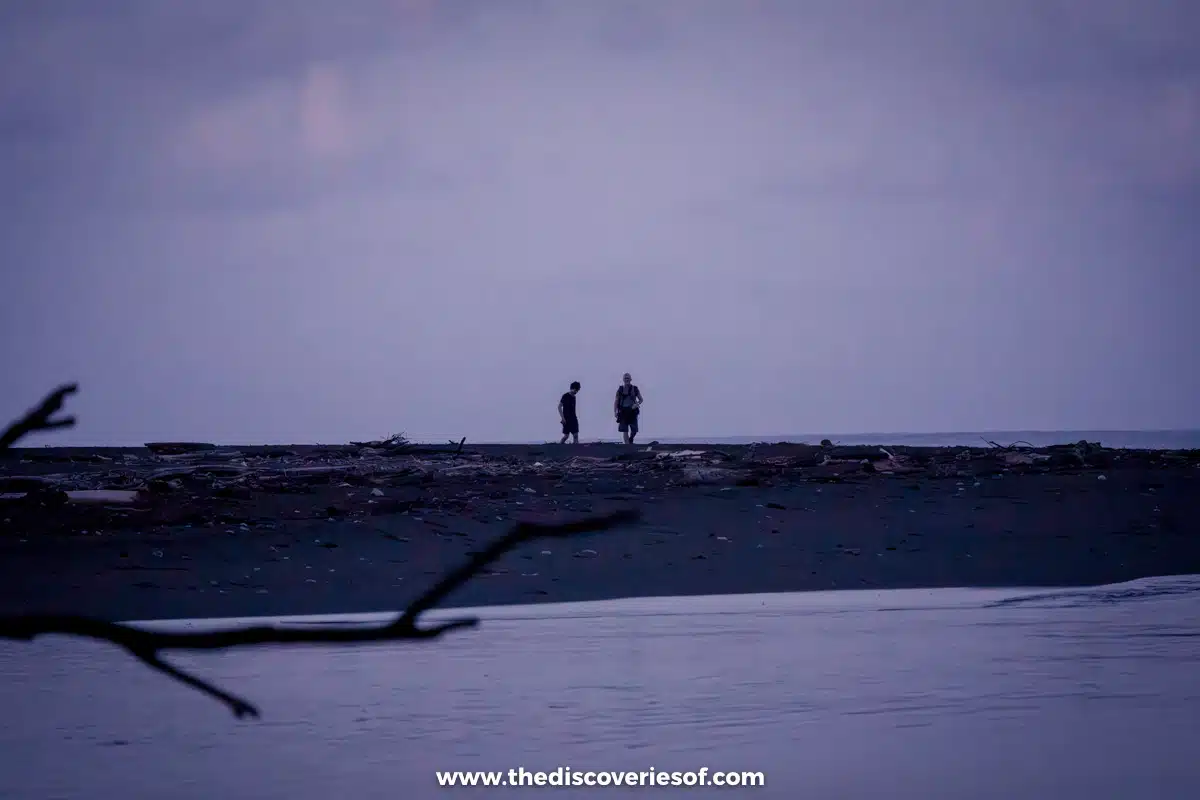
The dry season is from December to April. During these months, you can expect temperatures from about 24°C to 29.4°C (75°F to 85°F) and average rainfall under 200 millimetres (8 inches) per month.
It’s muggy but nowhere near as humid as it gets in the rainy season. The shorter days mean less time in the sun and make it easier to fall asleep early for your 5 am wake-up call.
Trail conditions are pretty good overall, but you will share them with many more people than during the rainy season.
Rainy Season
Now, if it’s not your first visit (or you’re just really not a fan of crowded trails) the rainy season may seem attractive. Admittedly, you can find lower hotel rates around Costa Rica and on transportation.
But the rainy season requires some serious planning and a fair amount of grit. Not only do you need great hiking gear for muddy trails, but the mozzies are insane, temperatures can approach 32°C (90°F), and the humidity is often well above 80%.
Average rainfall consistently tops 400 millimetres (15.7 inches) and can even approach 800 millimetres (31.5 inches) in a single month.
Top Tip
October is the wettest month by far. It’s common that trails close, and rivers may become impossible to cross. Sirena Station is actually closed for the entire month, and other accommodations may shut down on a whim.
What to Pack
Corcovado National Park is a true adventure. It’s (in a word) epic. So to avoid looking like a noob and stay a lot more comfortable, pack the following gear.
- Water-resistant hiking boots
- Hiking Poles (if you’re hiking in the areas beyond that surrounding La Sirena)
- Camera with a zoom lens and lots of memory
- Power bank
- Travel backpack with rain cover – if you’re packing really light, you can get away with just your daypack
- Small daypack (that can go inside your main backpack)
- Water shoes or sandals for boat transfers (you get wet)
- Sunglasses (during the dry season)
- Hats
- Long sleeves (for ticks)
- Lightweight hiking trousers
- Hiking socks
- Sunscreen
- Waterproof jacket
- Reusable Water bottle – I recommend a two litre water bladder that can fit inside your daypack
- Bug spray
- Anti-insect sleepwear
- Noise-cancelling headphones or earplugs (for sleeping in dorms)
- Swimwear
- Water shoes or sandals (you get wet on transfers)
- Quick dry towel (see above)
- Head torch (for dusk and dawn)
- Small first aid kit
- Padlock for lockers
- Basic toiletries
- Electrical chargers / necessary accessories
- Binoculars (optional)
How to Visit Corcovado National Park?
You can visit Corcovado National Park from two locations, Drake Bay and Puerto Jimenez.
No matter how you travel to Corcovado, be sure you have your tour lined up months ahead of time, as the park limits visitors to each ranger station. In total, fewer than 350 people are allowed anywhere in the park each day.
You also need a guide to enter and have to pay a fee for the ranger station. Both are included in the cost of most tours but read the fine print.
From Drake Bay
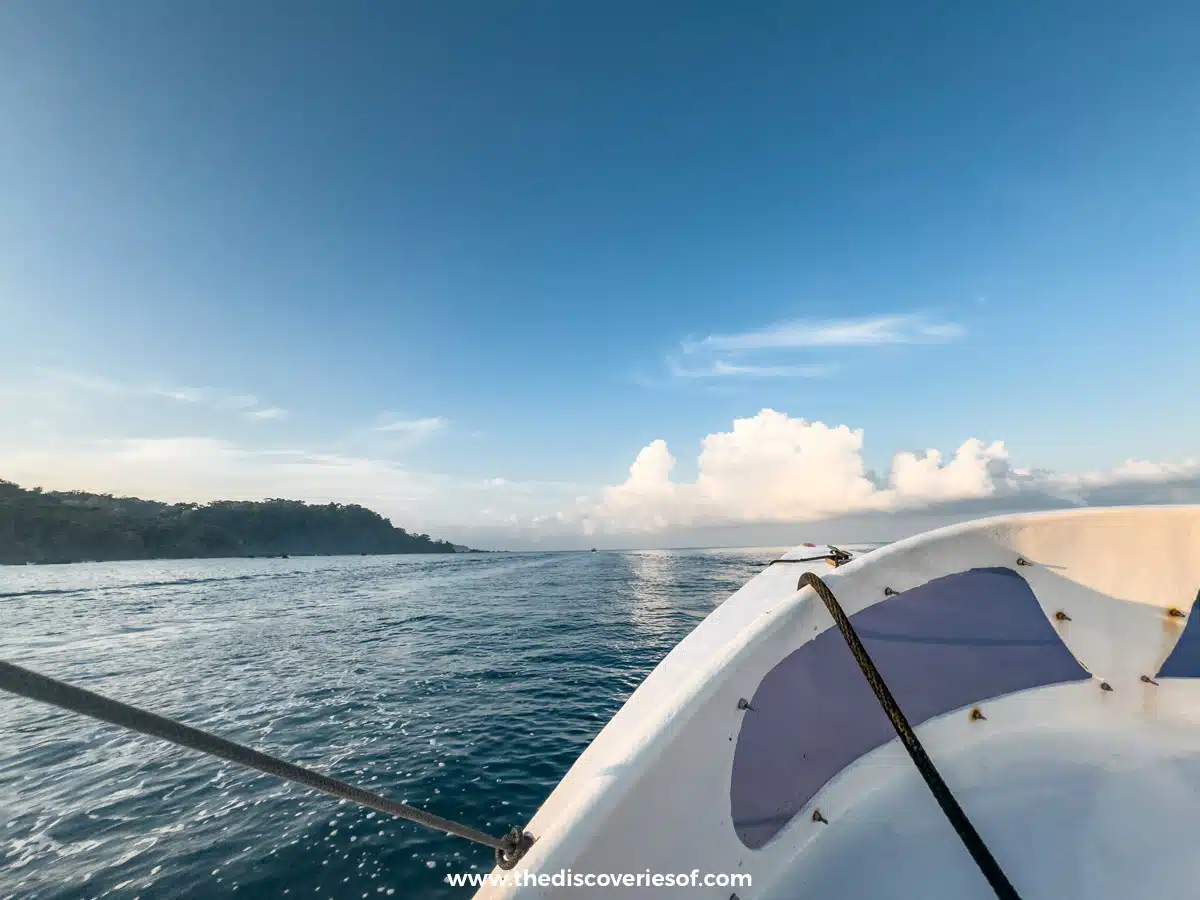
There are two main ways of getting to Drake Bay: by boat from Sierpe or by plane from San Jose. I did both and thought it was a cool way to see more of the area.
It’s a 40-minute flight (give or take) from San Jose to Drake Bay Airport with Sansa Airlines. Expect to pay $170 per person (₡87,000), including the fare for heavier luggage, around 40 pounds.
If you do fly, be sure to arrange a transfer to your hotel ahead. It’s a tiny airport with no taxis just waiting for fares. Expect to pay around $10-$12 (₡5,100 – ₡6,100) for a shared transfer to the town or $20 (₡10,200) for a private one.
Alternatively, you can drive from San Jose to Sierpe, park your car near Hotel Oleaje Sereno, and take the boat from here at 11:30 a.m. or 3:30 p.m.
The boats do sell out, so organise one through your hotel or at a travel agency in the centre of town. You should be able to book through your hotel; otherwise, there are travel agencies in the centre of town.
The boat ride takes just over an hour and costs$15-$20 (₡7,650-₡10,200) cash. It’s a gorgeous ride where you skirt along the coastline before wending your way between a series of mangroves.
Wear water shoes if you choose this option – you hop on and off directly from shore.
Getting There
Once you’re in Drake Bay, you can reach Corcovado by water taxi or 4×4, though most tours arrange transportation by boat.
From Puerto Jimenez
The other starting point for a Corcovado National Park Tour is Puerto Jimenez. You can get from Puerto Jimenez to Corcovado a couple of ways.
The most common are taxing a boat taxi or a 4 x 4 to Carate, which takes a little over 1 hour. Then, it’s a 20-30 minute hike to La Leona Station. From there, you can hike to Sirena, but it’s an additional 11.7-mile hike that takes 4-5 hours.
Some tours take the boat directly to Sirena Station, as well. This ride takes 90 minutes from beach to beach.
Travellers also take colectivos to Las Palma (closest to Los Patos Station), which is a lot more remote. The hike from Las Palma to Sirena is long and strenuous and takes at least 6 hours.
Which Access Point Should You Choose? Drake Bay or Puerto Jimenez
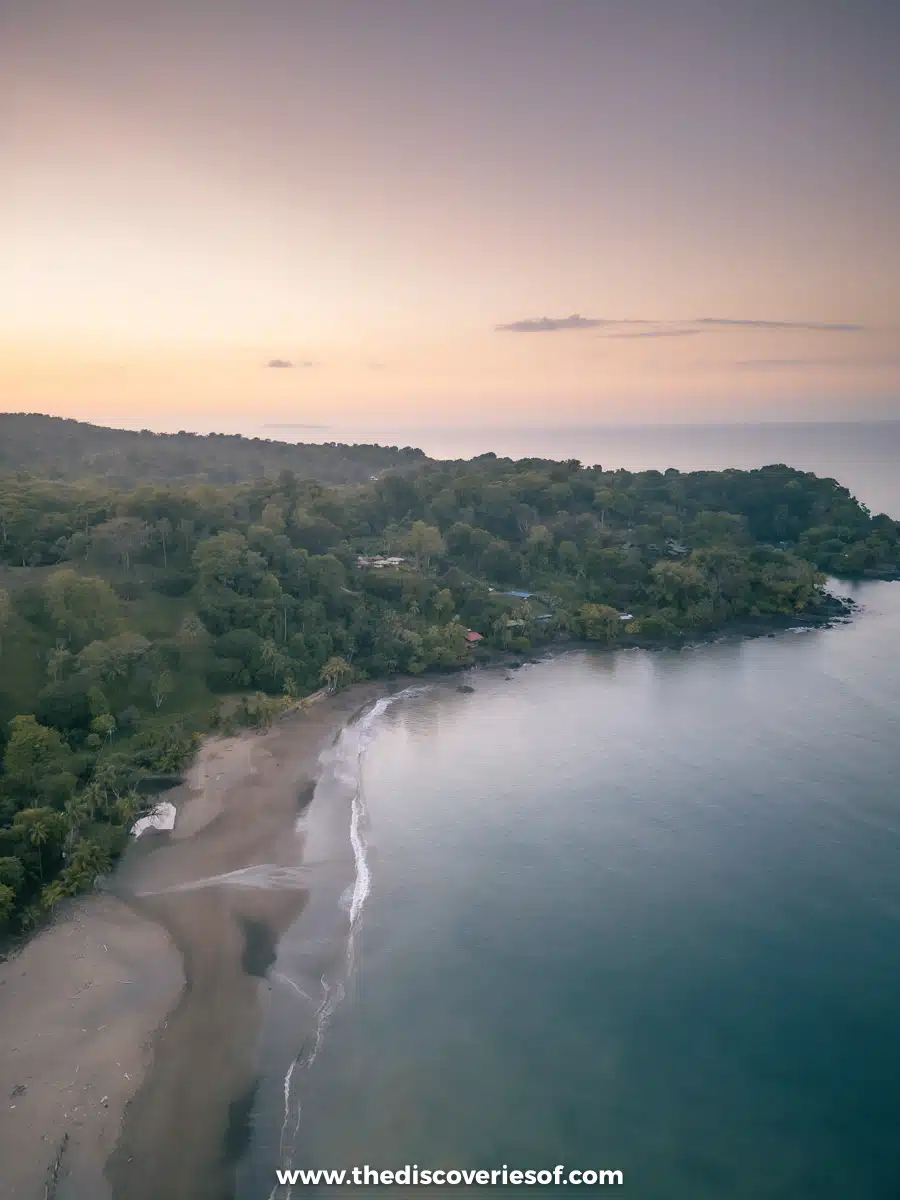
I think Drake Bay is the way to go for most visitors.
First, you can only access it by aeroplane, boat, or 4 x 4, so it feels like the perfect jumping-off point for a trip to the wild jungles of Corcovado.
That said, Puerto Jimenez has a lot more accommodation options and plenty of choices for food. There are also activities nearby, like an amazing bioluminescence kayak tour on Golfo Dulce.
While Puerto Jimenez is popular with adventurers for its epic hikes and more remote locations, I thought Drake Bay was super convenient for accessing Sirena Station, the best place to see wildlife in the park.
Suggested Itineraries
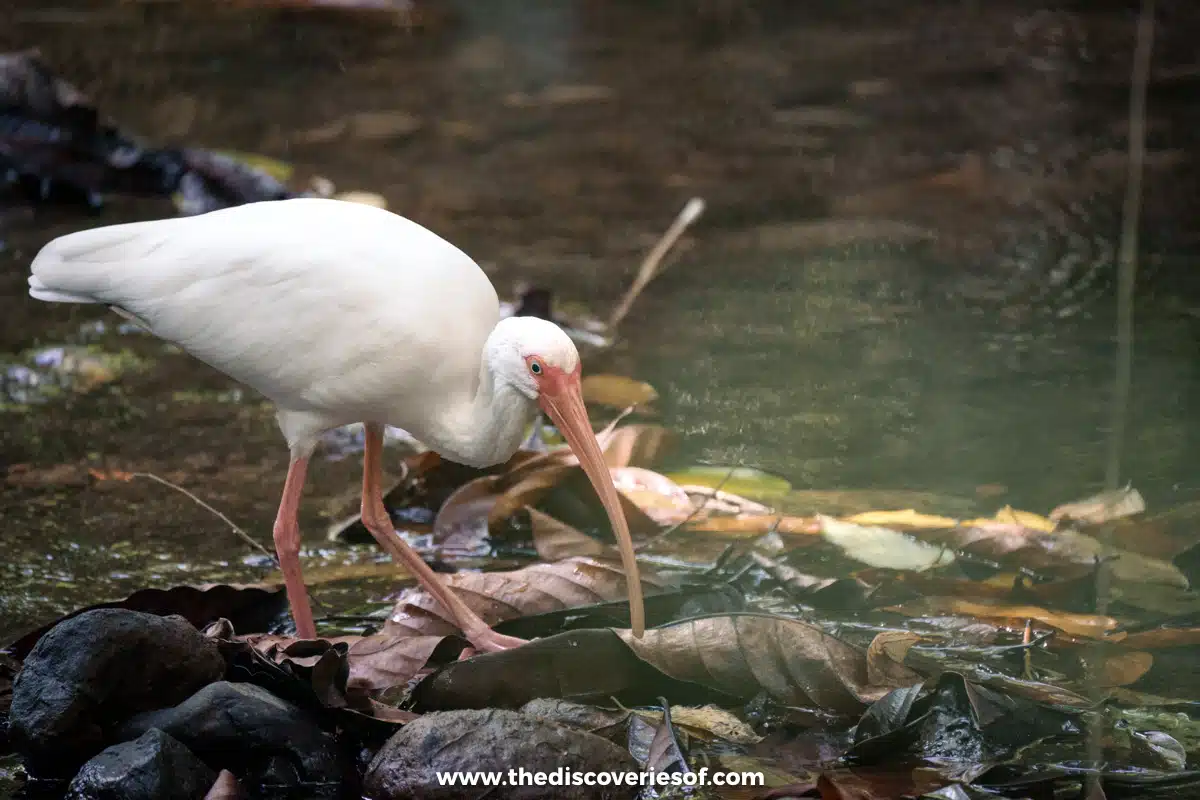
Day Trip to Sirena
Drake Bay – Sirena
Land in Drake Bay and take a water taxi to Sirena, where you can see an insane amount of wildlife in the secondary forest.
Overnight in La Sirena
Puerto Jimenez – Carate – La Leona Ranger Station – Sirena Station
Head to La Leona Ranger station if you’re visiting from Puerto Jimenez. From here, you can hike to Sirena Station and spend the night.
2 Nights in Corcovado
Sirena – San Pedrillo – Los Planes (Green Paradise) – Drake Bay
I followed this exact itinerary on my last trip, and it was amazing. Spend 3 days hiking some of the best trails, with stops at several ranger stations along the way.
Map
Read More Costa Rica Travel Guides
Love This? Save and Share on Pinterest!
